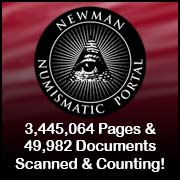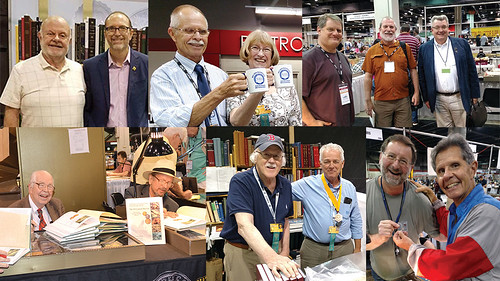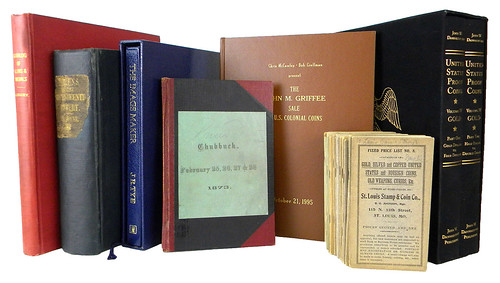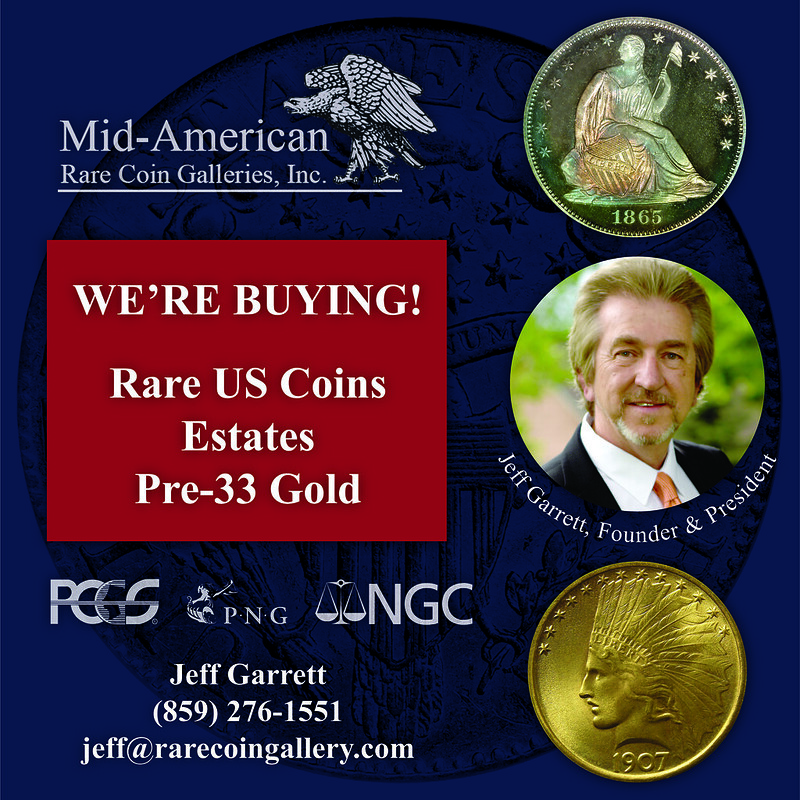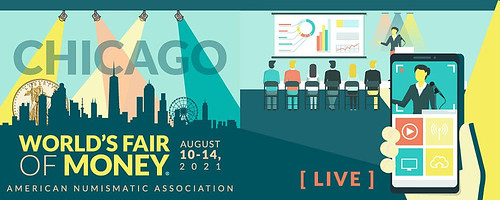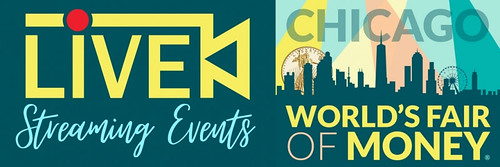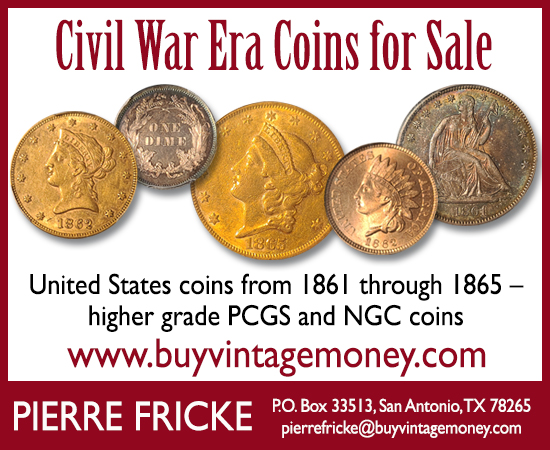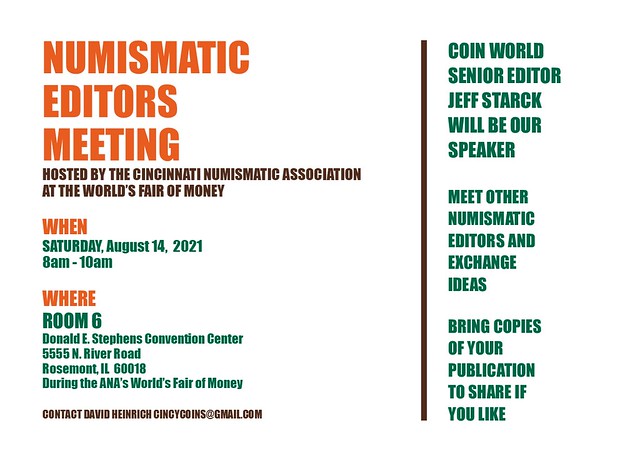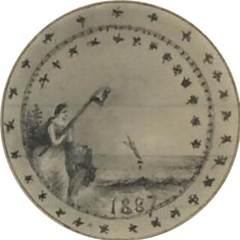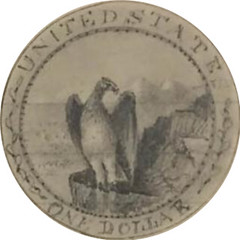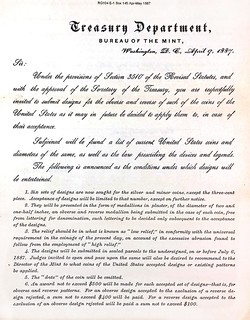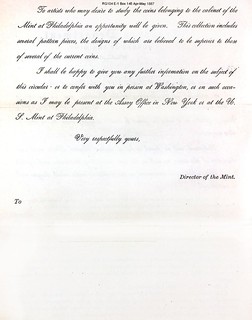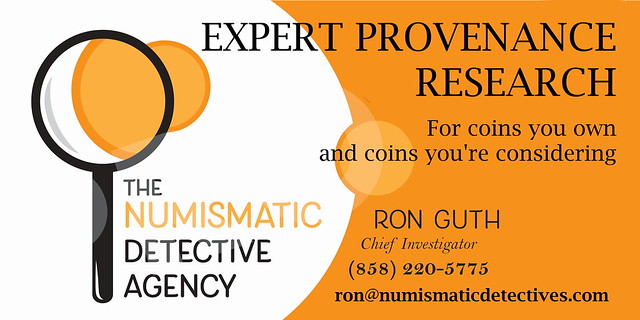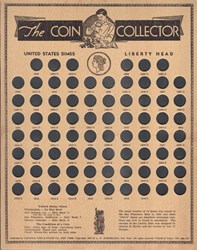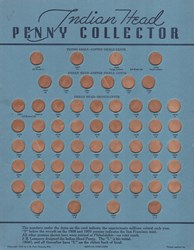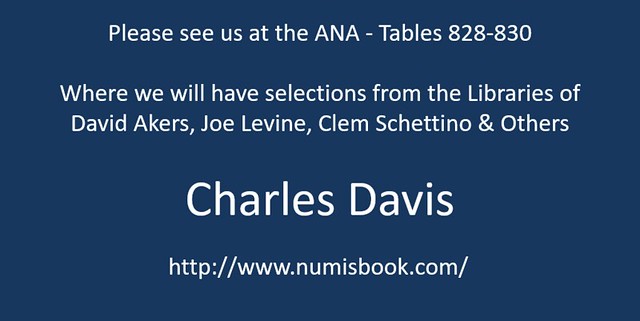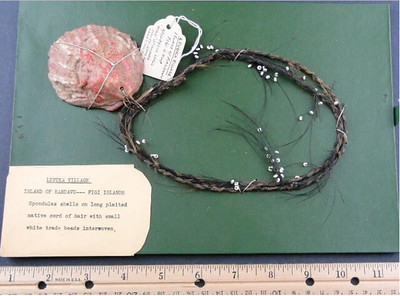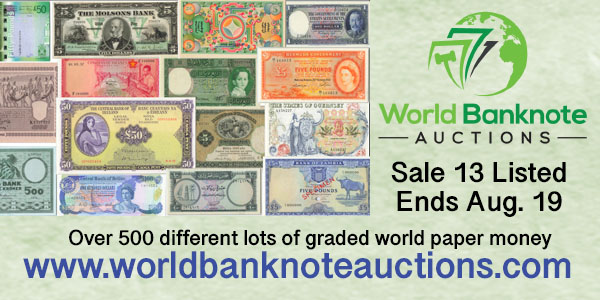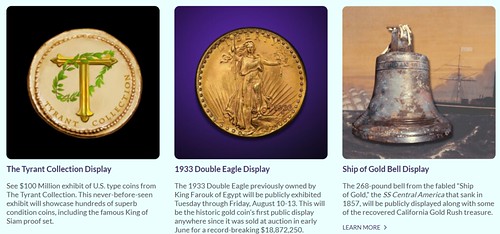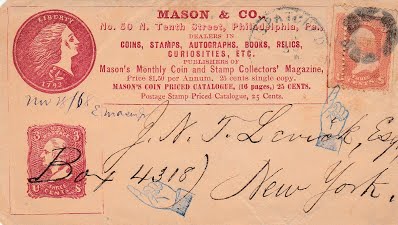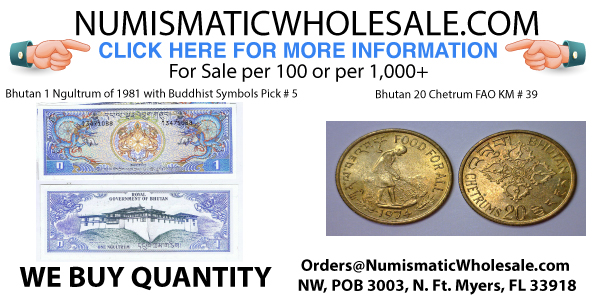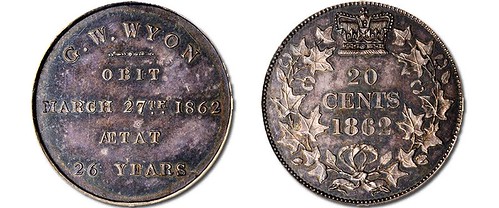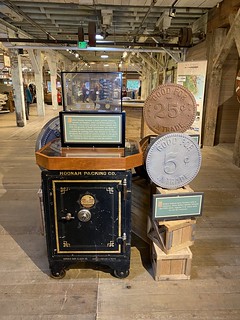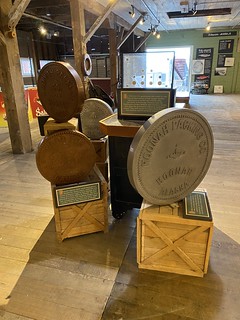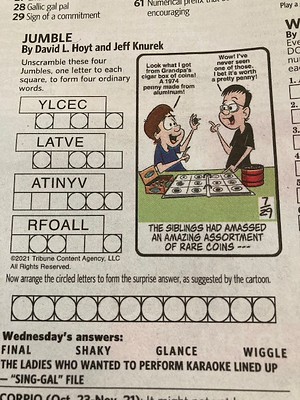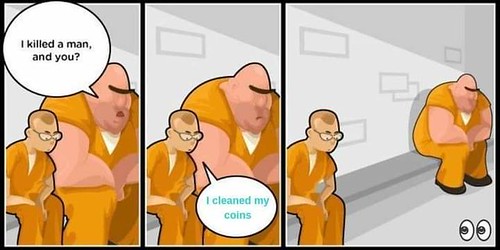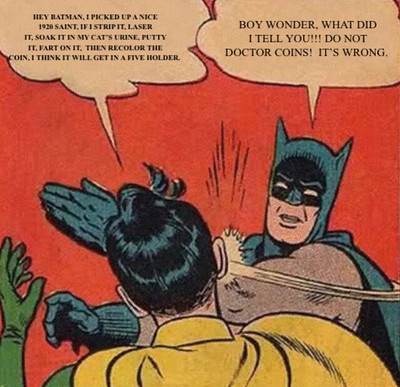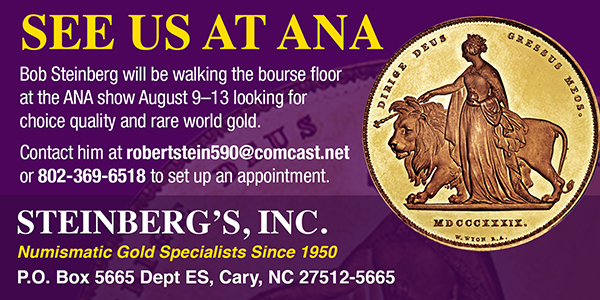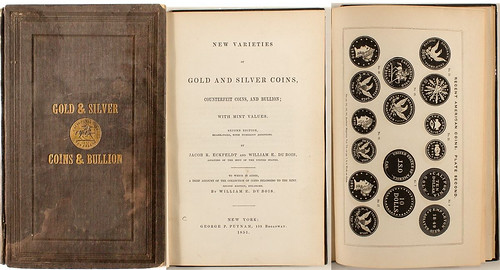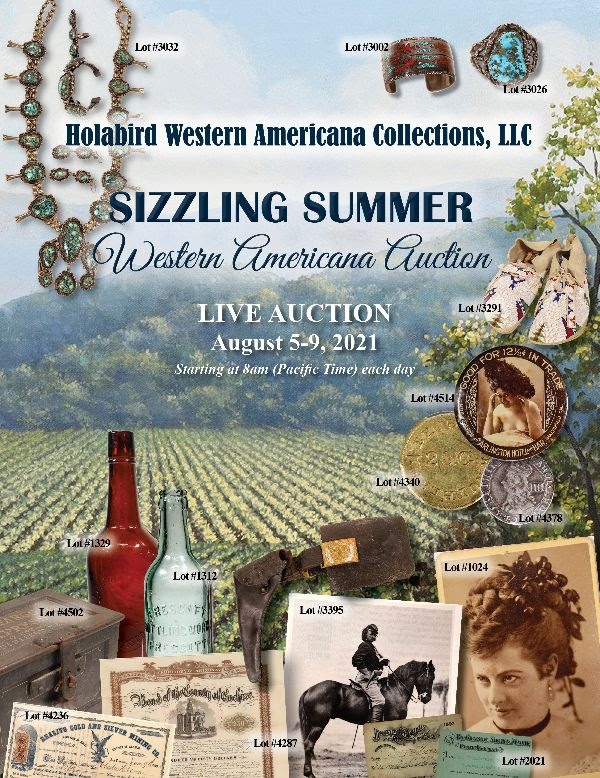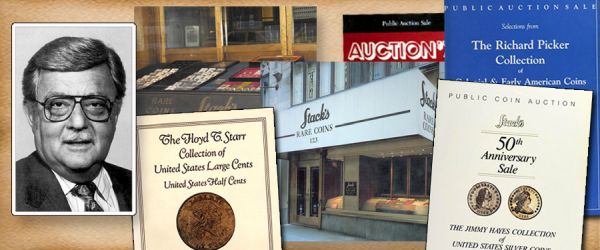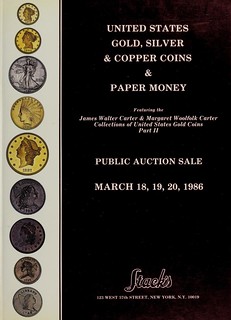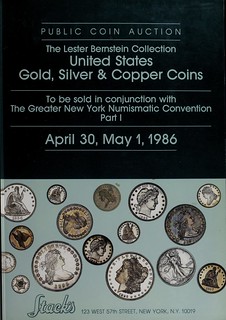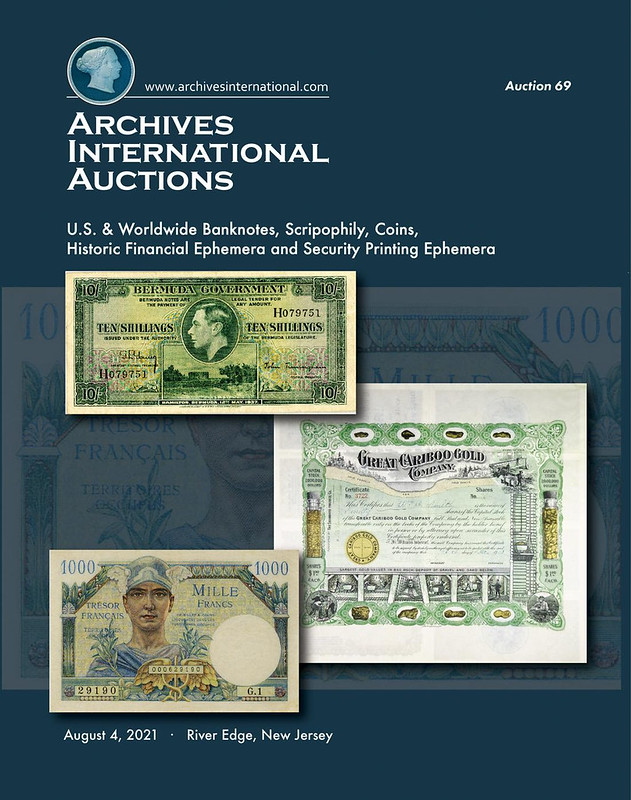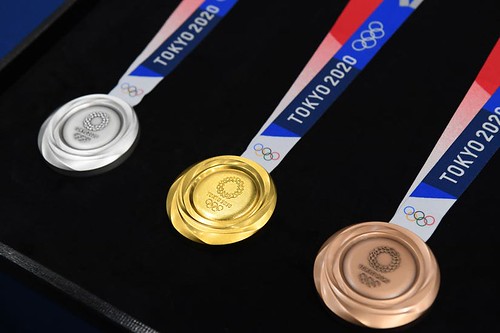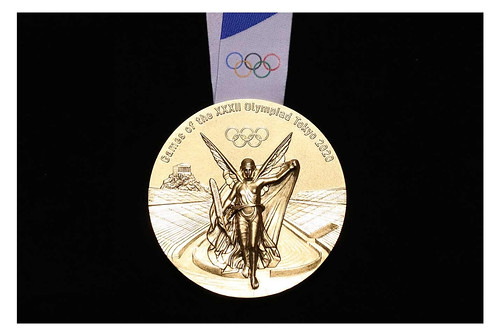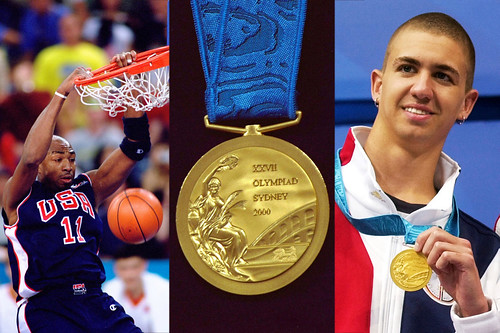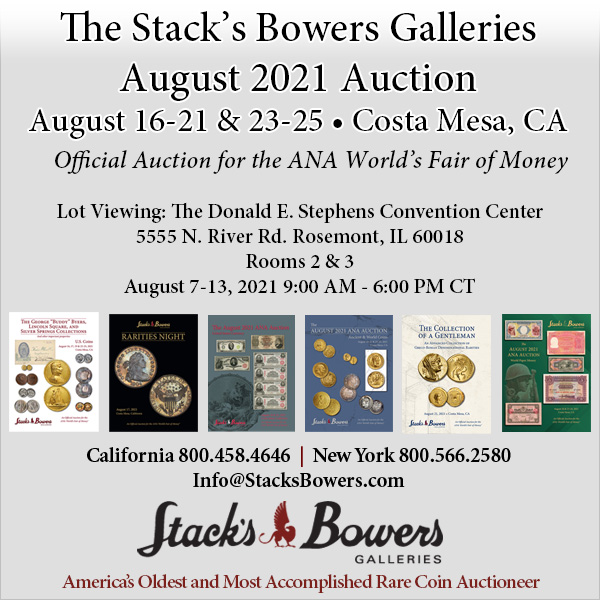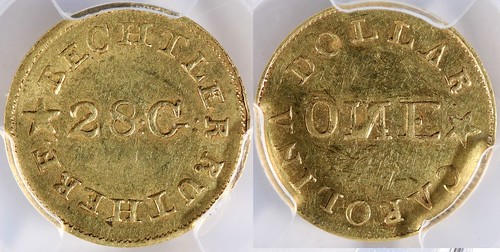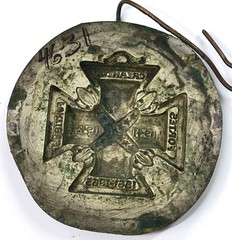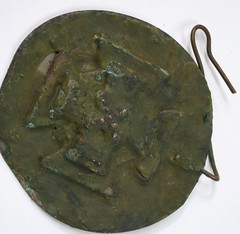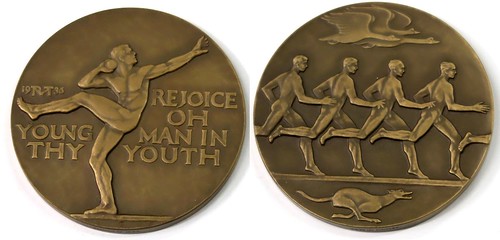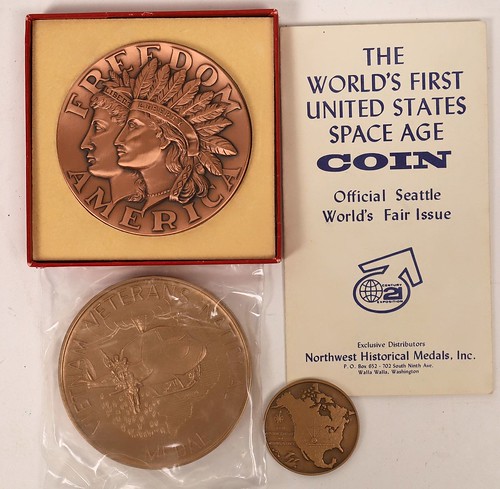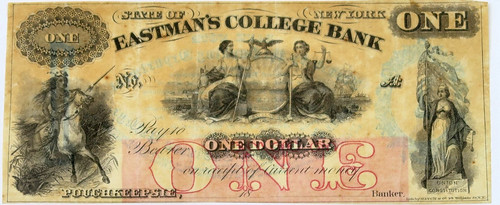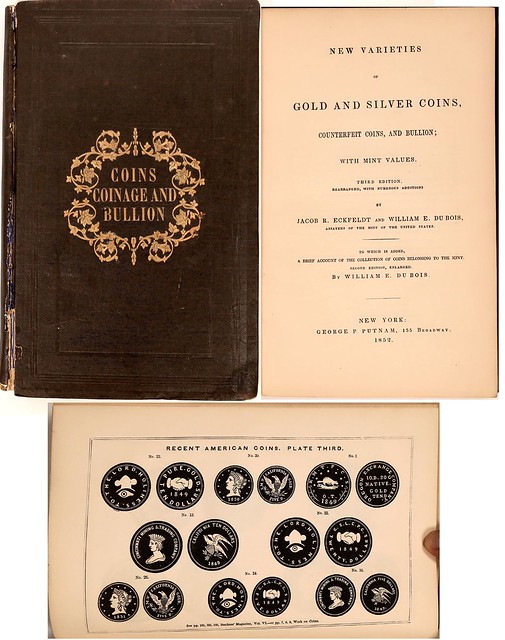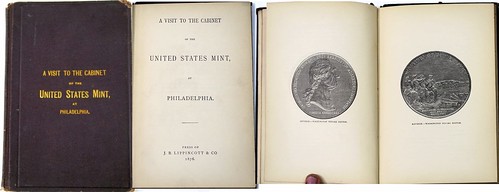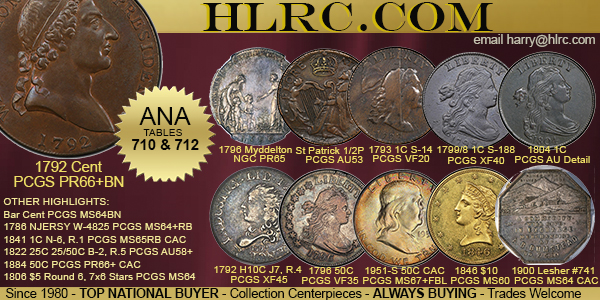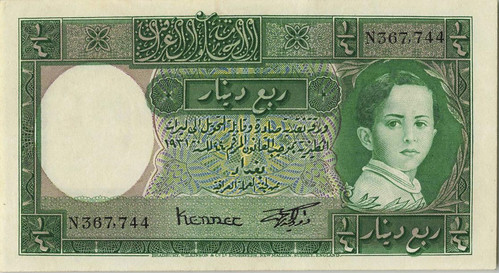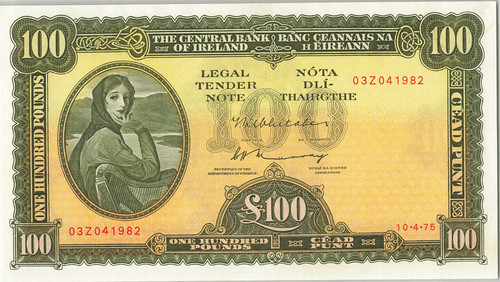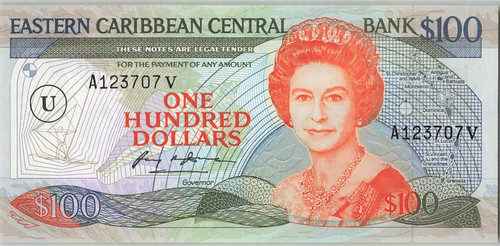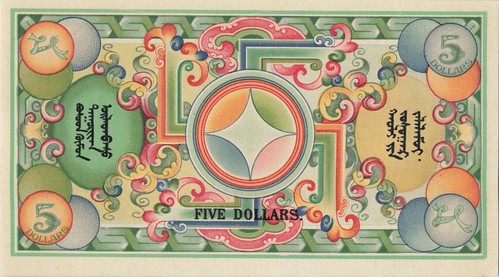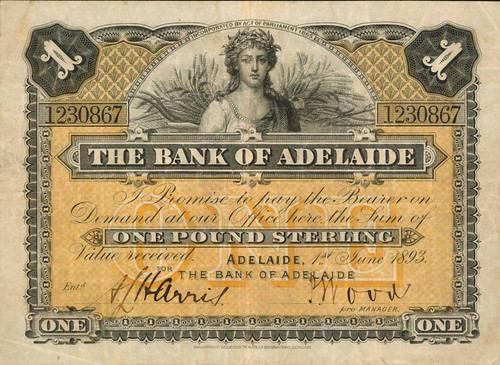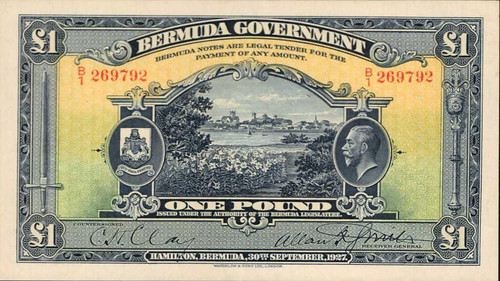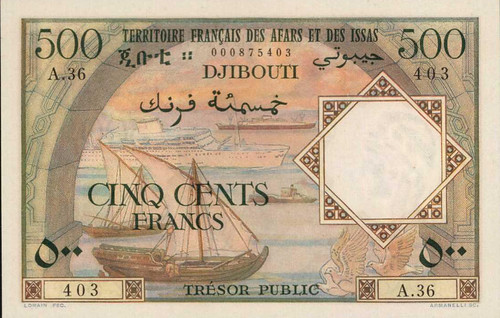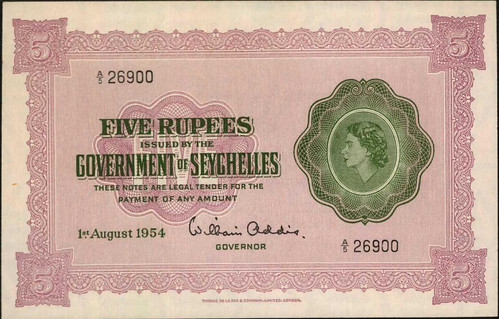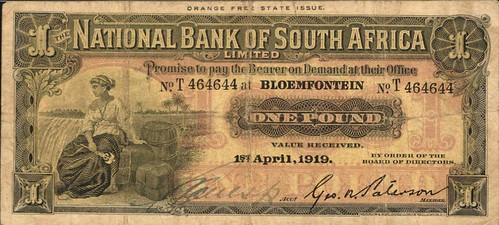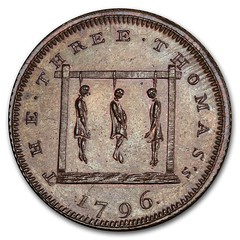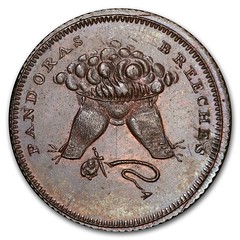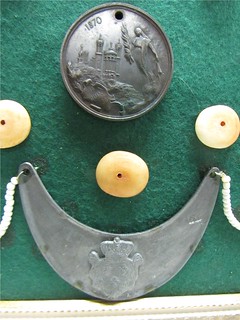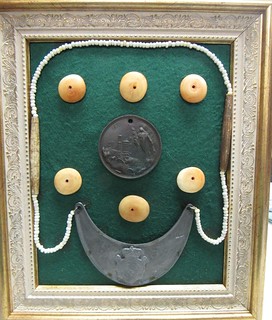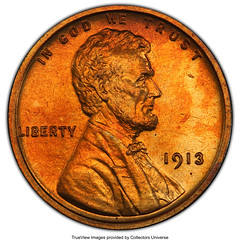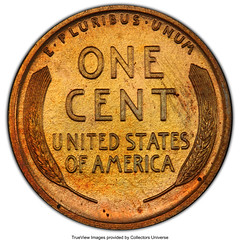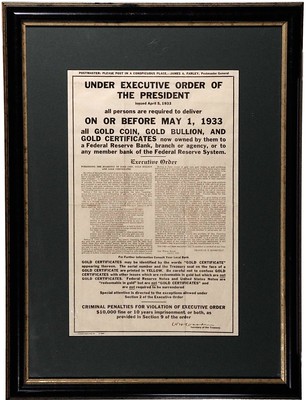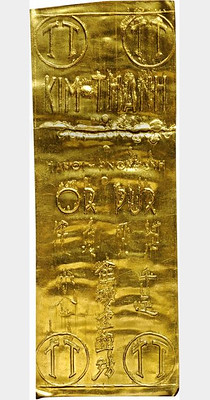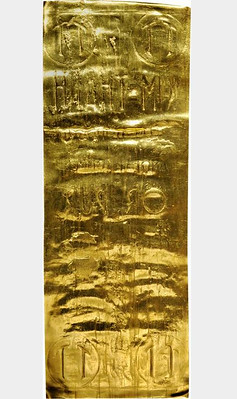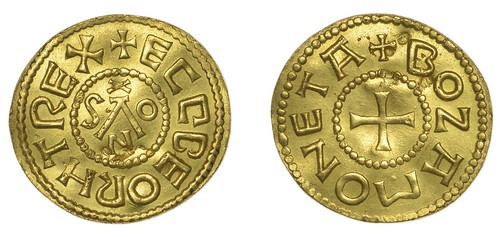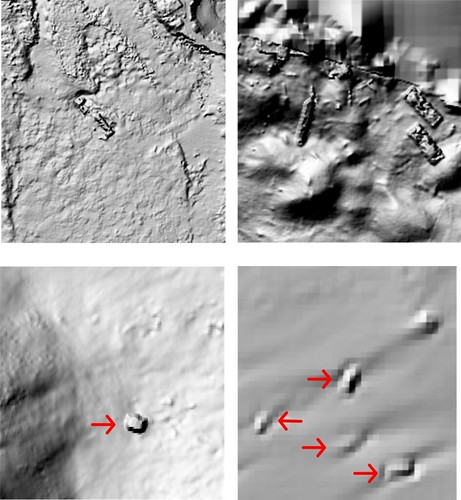
Visit our NBS Sponsors


About UsThe Numismatic Bibliomania Society is a non-profit association devoted to the study and enjoyment of numismatic literature. For more information please see our web site at coinbooks.org SubscriptionsThose wishing to become new E-Sylum subscribers (or wishing to Unsubscribe) can go to the following web page link MembershipThere is a membership application available on the web site Membership Application To join, print the application and return it with your check to the address printed on the application. Print/Digital membership is $40 to addresses in the U.S., and $60 elsewhere. A digital-only membership is available for $25. For those without web access, write to: Charles Heck, Treasurer AsylumFor Asylum mailing address changes and other membership questions, contact Chuck at this email address: treasurer@coinbooks.org SubmissionsTo submit items for publication in The E-Sylum, write to the Editor at this address: whomren@gmail.com BUY THE BOOK BEFORE THE COINSale CalendarWatch here for updates! |
- WAYNE'S WORDS: THE E-SYLUM AUGUST 1, 2021
- NBS EVENTS AT 2021 ANA WORLD'S FAIR OF MONEY
- NBS EVENTS AT 2021 ANA TO BE LIVESTREAMED
- NEW BOOK: HANDBOOK OF BIBLICAL NUMISMATICS
- NEW BOOK: WHEN MONEY TALKS
- NEW BOOK: ALLIED MILITARY MARKS IN GERMANY
- NEW BOOK: THE 70 YEAR JOURNEY OF CURRENCY
- NEW BOOK: DRIFTLESS GOLD
- ANS ACQUIRES THÉODORE-EDME MIONNET PAPERS
- 1887 COIN DESIGN SOLICITATION
- NEWMAN PORTAL ADDS LANGE COIN BOARDS
- VIDEO: 2021 SUMMER FUN CONVENTION
- HOWARD GIBBS, PRINCE OF PRIMITIVE MONEY
- EXHIBITS AND EVENTS AT THE 2021 ANA SHOW
- ON COIN DEALER ACCESS TO THE U.S. MINT
- NOTES FROM E-SYLUM READERS: AUGUST 1, 2021
- ALBERT KUNER COPY OF ECKFELDT-DUBOIS SOUGHT
- VOCABULARY TERM: FERROTYPE
- HARVEY STACK'S NUMISMATIC FAMILY, PART 101
- EDGAR HOLMES ADAMS
- THE 2020 SUMMER OLYMPIC MEDAL DESIGNS
- THE OLYMPIC MEDAL MARKET
- SAN FRANCISCO COIN UNIVERSITY A SUCCESS
- SELECTIONS FROM HOLABIRD AUGUST 2021 SALES
- WORLD BANKNOTE AUCTIONS SALE 13 ANNOUNCED
- DON ALLEN BANKNOTE COLLECTION SELECTIONS
- NUMISMATIC NUGGETS: AUGUST 1, 2021
- GOLD PENNY OF ECGBERHT OFFERED
- GOLD COIN FOUND AT ATOCHA SHIPWRECK SITE
- SPOTTING SHIPWRECKS WITH COMPUTERS
- THE TUSSLE OVER TESLA
- SACRAMENTO MUSEUM GOLD ARTIFACTS STOLEN
Click here to read the thin version on the web
Click here to subscribe
Click here to access the complete archive
To comment or submit articles, reply to whomren@gmail.com
Content presented in The E-Sylum is not necessarily researched or independently fact-checked, and views expressed do not necessarily represent those of the Numismatic Bibliomania Society.
WAYNE'S WORDS: THE E-SYLUM AUGUST 1, 2021
 New subscribers this week include:
Bob Cassling, courtesy Doug Winter and Ron Guth;
Sarma Pydipally, courtesy John Ferreri;
Jake Utz of Amos Media, courtesy John and Nancy Wilson;
Eugenio Lucero, and
James Williston.
Welcome aboard! We now have 6,681 subscribers.
New subscribers this week include:
Bob Cassling, courtesy Doug Winter and Ron Guth;
Sarma Pydipally, courtesy John Ferreri;
Jake Utz of Amos Media, courtesy John and Nancy Wilson;
Eugenio Lucero, and
James Williston.
Welcome aboard! We now have 6,681 subscribers.
Thank you for reading The E-Sylum. If you enjoy it, please send me the email addresses of friends you think may enjoy it as well and I'll send them a subscription. Contact me at whomren@gmail.com anytime regarding your subscription, or questions, comments or suggestions about our content.
This week we open with updates on NBS events at the upcoming ANA convention, five new books, updates from the Newman Numismatic Portal, reader comments and more.
Other topics this week include Biblical Numismatics, postwar Allied military money in Germany, Howard Gibbs, Albert Kuner, Edgar Adams, ferrotypes, Olympic medals, auction previews, shipwreck finds, and a museum theft.
To learn more about Carson City coinage, Théodore-Edme Mionnet, the 1887 U.S. Mint coin design circular, coin boards, Summer FUN, rainbow toning, coins in the comics, the Lester Bernstein sale, Bechtler gold, great world banknotes, the World's First United States Space Age Coin and the coin book that survived The Blitz, read on. Have a great week, everyone!
Wayne Homren
Editor, The E-Sylum
NBS EVENTS AT 2021 ANA WORLD'S FAIR OF MONEY
We're getting closer and closer to the ANA convention. Here's an update on planned events for our sponsor organization, the Numismatic Bibliomania Society. -Editor
We are excited to once again be attending the ANA World's Fair of Money in person. The Numismatic Bibliomania Society will be hosting club table #724 from Tuesday through Friday. We will be displaying some of the highlights from our all important charity auction that will be held during the General Meeting on Friday, and be offering NBS coffee mugs for a $25 donation to the NBS. Please stop by to say "hi" and share your thoughts about the NBS.
Symposium and Meeting
The NBS will be holding our Symposium on Thursday, August 12th at 1:00 PM in room 24. The Symposium will feature a presentation by Rusty Goe who is a recognized authority on the history of the Carson City Mint and its coinage. He will be speaking about his three volume set titled The Confident Carson City Coin Collector.
The General Meeting will be held on Friday, August 13th at 11:30 AM in room 7. The meeting will include the announcement of the awards for the best articles in our print journal, The Asylum and a presentation by NBS Vice President, Len Augsburger discussing the digitalization of Coin World and Numismatic News.
NBS Benefit Auction
Another highlight will be the charity auction that always provides a fascinating variety of literature. The auction is our one annual fund-raiser, so we hope you will join us to help support the mission of the NBS.
Looking forward to gathering in Rosemont!
Each year at the ANA World’s Fair of Money, the Numismatic Bibliomania Society conducts a benefit auction to raise funds for the organization. All items sold are donated to the NBS by members and 100% of the proceeds go to the NBS treasury.
This year, we are trying to increase participation in the auction by distributing a catalogue of the sale to all NBS members so that members unable to attend in person can participate. You can download a PDF of the catalogue here.
Absentee bids should be sent to David Fanning at df@numislit.com by the end of Thursday, August 12. The sale will take place on Friday, August 13 as part of the NBS General Meeting, to be held in Room 7 from 11:30 a.m. to 1:30 p.m. Please read the terms of sale before bidding.
Thank you for your support of the NBS!
There are some truly great items in this year's sale - please do review the catalog and enter bids if you'll be unable to attend the live sale.
Also, be sure to visit the tables of numismatic literature dealers Charlie Davis and Kolbe & Fanning. Charlie's ad elsewhere in this issue describes what he'll have at tables 828-830. Kolbe & Fanning will be located next door at booth 832. -Editor
Maria Fanning writes:
"We will have with us selections from stock, including a number of items that have not yet been listed on our website, as well as material from American and European consignors. A small but interesting group of numismatist tokens, medals and convention badges will also be available for sale."
To read the earlier E-Sylum article, see:
NBS EVENTS AT 2021 ANA WORLD'S FAIR OF MONEY
(https://www.coinbooks.org/v24/esylum_v24n30a03.html)
NBS EVENTS AT 2021 ANA TO BE LIVESTREAMED
For those unable to attend this month's American Numismatic Association World's Fair of Money in Rosemont, Lianna Spurrier will be livestreaming some show events, including the NBS General Meeting and Symposium. This is a new development for coin shows - watch ANA history being made! -Editor
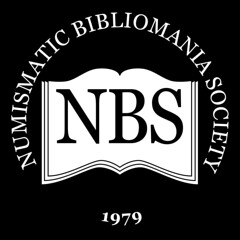 NBS General Meeting
NBS General Meeting
https://vimeo.com/event/1171358
Numismatic Bibliomania Symposium
https://vimeo.com/event/1171349
Liberty Seated Collectors Club
https://vimeo.com/event/1171342
Medal Collectors of America General Meeting
(If previous meeting ends in time)
https://vimeo.com/event/1171352
The ANA itself will be livestreaming some show events. -Editor
The ANA will livestream select activities and events at this year's World's Fair of Money to the ANA Facebook page. Join us at facebook.com/numismatics at the scheduled dates and times to join the fun! The tentative schedule is as follows:
Monday, August 9
1:00 PM CT: Tour of The Tyrant Collection display
Tuesday, August 10
8:30 AM CT: Ringing of the bell from the SS Central America (aka, the "Ship of Gold") with Robert Evans
12:30 PM CT: Opening Ceremony
Thursday, August 12
3:00 PM CT: Highlights from the ANA's Member & Awards Celebration
Friday, August 13
10:00 AM CT: Meet and greet with Benjamin Franklin and Abraham Lincoln impersonators
7:00 PM CT: Highlights from the ANA's 130th Anniversary Awards Banquet
For more information, see:
World's Fair of Money® Livestream Events Schedule
(https://www.money.org/wfm/livestream)
NEW BOOK: HANDBOOK OF BIBLICAL NUMISMATICS
A greatly expanded new edition of Mel Wacks' book on Biblical numismatics has been published, Here's the announcement. -Editor
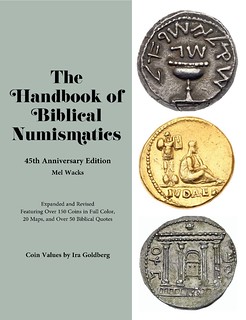 Mel Wacks has published the
Mel Wacks has published the 45th Anniversary Edition of the Handbook of Biblical Numismatics.
It is greatly expanded from the original 1976 book, and features over 150 coins in full color, 20 maps, and over 50 Biblical quotes. Readers will also find enlarged photos of small coins and estimated coin values by Ira Goldberg.
While it is still easily read by the novice, it also contains the latest theories of experts in the field on controversial subjects like the bud (pomegranate or poppy?) appearing in between double cornucopia on Hasmonean coins, the vessel (chalice or pot of manna?) and budding plant (pomegranates or Aaron’s rod?) on First Revolt Shekels, the star (Bar Kochba = Son of the Star or the golden candelabrum donated by Queen Helena) above the Temple on the sela’im issued during the Second Revolt, etc. The coins mentioned in the New Testament also receive attention - the Widow’s Mite, Tribute Penny and Thirty Pieces of Silver.
Chapters are generally preceded by expert maps, and cover the Hasmoneans, Herodians, Prefects/Procurators, First Revolt, Judaea Capta, Second Revolt, etc. Readers will also learn about the Herodian Kings of Armenia, the Jewish Princess Salome, and the connection between Cleopatra and Judaea. There was so much text that it burst out to seven appendices, including Ancient Hebrew Coin Inscriptions, The Holy of Holies on Ancient Judaean Coins, Roman Tenth Legion Counterstamps, and False Shekels.
Designing the 120-page opus was done by Lianna Spurrier through the generosity of the Newman Numismatic Portal. Noted collector and philanthropist Hon. Abraham Sofaer contributed this blurb on the Handbook’s back cover:
Somehow, Mel has managed to provide a work that is succinct without being superficial; that summarizes all the important material rather than limiting coverage through exclusion; and that simplifies complicated issues without compromising their difficulties. In pulling off this achievement, Mel has provided a practical, take-along, guide. Every important period is covered, and every significant coin type illustrated. Rather than attempting to supersede other types of books, Mel gives us all - collectors, scholars, and intelligent observers alike - something to use anywhere to identify coin types and context, read inscriptions, and even have some idea of value. Even a novice will be able quickly to learn and appreciate this aspect of Jewish history, and the history of other cultures with whom the Jewish People have interacted. The Handbook is thus a must have for the tutored and beginner alike.
The Handbook of Biblical Numismatics, 45th Anniversary Edition
is available for $29.50 on Amazon, and autographed copies can be ordered for the same price from the author using Paypal (email address of
directorjahf@yahoo.com) or call 818-225-1348.
To read the complete book on NNP, see:
Handbook of Biblical Numismatics, 45th Anniversary Edition
(https://nnp.wustl.edu/library/book/600117)
For more information, or to order on Amazon, see:
The Handbook of Biblical Numismatics: 45th Anniversary Edition
(https://www.amazon.com/Handbook-Biblical-Numismatics-45th-Anniversary/dp/0578810654/ref=sr_1_1)
NEW BOOK: WHEN MONEY TALKS
A new Oxford University Press book from author Frank Holt is a multi-century view of coins and numismatics. Here's some information from the publisher's site. -Editor
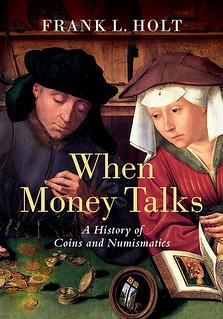 Coinage--it is one of the most successful and consistent technologies ever invented. Nothing else we still use in everyday life has a history quite like it. Look around at all the things that would bewilder a Greek, Roman, or Renaissance ancestor; then, dig into your purse or pocket for that one artifact that they would immediately recognize as part of their world. Historian Frank L. Holt takes us on a lively journey through the history of numismatics, the study of coins--one of the oldest and most important contributions to the arts and humanities.
Coinage--it is one of the most successful and consistent technologies ever invented. Nothing else we still use in everyday life has a history quite like it. Look around at all the things that would bewilder a Greek, Roman, or Renaissance ancestor; then, dig into your purse or pocket for that one artifact that they would immediately recognize as part of their world. Historian Frank L. Holt takes us on a lively journey through the history of numismatics, the study of coins--one of the oldest and most important contributions to the arts and humanities.
For 2600 years, poets, economists, philosophers, historians, and theologians have pondered the mysteries of money. Who invented coins, and why? Does coinage function beyond our control as if it had a mind of its own? How has it changed world history and culture? What does numismatics reveal about our past that could never be discovered from any other source? How has numismatics advanced using modern science? Does it still suffer from racist ideas about physiognomy and phrenology? What does its future hold? The approach taken in this richly illustrated book is as multi-faceted as coined money itself. Coins are integral to our economic, social, political, religious, and cultural history. When Money Talks: A History of Coins and Numismatics explores each aspect of coinage, and takes a special interest in how coins have appeared in literature and pop culture, ranging in its analysis from Greek drama and the New Testament to T.V. sitcoms and meme theory.
Author Information
Frank L. Holt is Professor of History at the University of Houston. His previous books include The Treasures of Alexander the Great: How One Man's Wealth Shaped the World, Lost World of the Golden King: In Search of Ancient Afghanistan, and Into the Land of Bones: Alexander the Great in Afghanistan. In addition to his large body of academic work, Holt is also a prolific writer for the public, with essays appearing in Newsweek, American Scientist, Archaeology, History Today, Archaeology Odyssey, The Chronicle of Higher Education, Saudi Aramco World, and other widely read publications.
Reviews
"There really is no other book like this. Holt explores the origins of money in the form of coinage and the history of the discipline that studies it (numismatics) in a highly readable and entertaining fashion. His ability to simplify difficult concepts and find the perfect analogy is remarkable, as is the breadth of his knowledge of money from the ancient world to the world of today." -- Peter van Alfen, American Numismatic Society
"A holistic and creative introduction to an often-underappreciated subject -- readily accessible to those with no prior knowledge of numismatics, but equally a thought-provoking must-read for specialists." -- Liv Mariah Yarrow, CUNY
Hardcover
Published: 01 July 2021
272 Pages | 140
6 1/2 x 9 1/4 inches
ISBN: 9780197517659
For more information, or to order, see:
When Money Talks
A History of Coins and Numismatics
(https://global.oup.com/academic/product/when-money-talks-9780197517659)
There is also a review of the book in The New Yorker. -Editor
To read the complete article, see:
Coins, the Overlooked Keys to History
(https://www.newyorker.com/books/under-review/coins-the-overlooked-keys-to-history)
THE BOOK BAZARRE
NEW BOOK: ALLIED MILITARY MARKS IN GERMANY
There's a new book in German for collectors of WWII-Era Allied military currency. Here's a Google translation of information in a Geldscheine-Online article by Hans-Ludwig Grabowski. -Editor
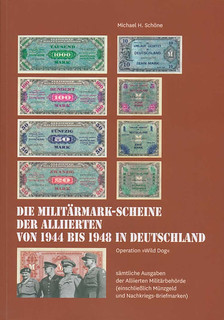 The Allied military marks from 1944 to 1948 in Germany
The Allied military marks from 1944 to 1948 in Germany
Operation "Wild Dog"
All Allied editions
Military authority (including coins and post-war stamps)
364 pages, full color,
Format 14.8 cm x 21 cm, paperback,
Pirna 2021, self-published.
ISBN: without.
Price: 44.94 euros.
For three decades, the author, known from many very well researched specialist articles and special catalogs, has done meticulous research, sifted through documents from various archives and gathered a huge amount of information.
In the past he had repeatedly reported on the money of the Allied military authorities and other authors have also devoted themselves to this important topic in specialist articles. The real reason for the new book is to put all the information together like a big puzzle and to present it as a popular scientific treatise not only to collectors but also to the public. To this end, he has viewed and evaluated all previous publications and documents available to him.
The result is much more than a catalog, the result is exemplary documentation, which spans a wide range from the prehistory of the Second World War to a separate assessment section. Hardly any aspect of the Allied money printed for the occupation of Germany goes unnoticed. In individual chapters all relevant topics are dealt with, for example the preparation for printing, the production in the USA and the Soviet Union, printing variants, the areas of validity, the numbering and finally - which is of particular interest to collectors - standard notes, specimens, samples , Exchange notes, misprints and forgeries.
The documentation is supplemented by the extensive use of statistics, maps, laws, documents, information on print quantities, delivery and destruction lists, images of graffiti as well as information on losses, areas and periods of validity as well as the literature and sources used.
In addition to the notes of the Allied military authority, coins and postage stamps as well as peripheral areas such as the Allied canteen money are discussed.
All in all, a very successful and unique documentation about the time of the Allied occupation in Germany and their financial evidence.
Interested parties please contact the author directly:
Michael H. Schöne,
michael@schoene-pirna.de
To read the complete article, see:
Schöne: Die Militärmark-Scheine der Alliierten von 1944 bis 1948 in Deutschland
(https://www.geldscheine-online.com/post/sch%C3%B6ne-die-milit%C3%A4rmark-scheine-der-alliierten-von-1944-bis-1948-in-deutschland)
NEW BOOK: THE 70 YEAR JOURNEY OF CURRENCY
Pabitra Saha passed along this article about a new book from the Central Bank of Sri Lanka on the history of the Currency Department. Thanks! -Editor
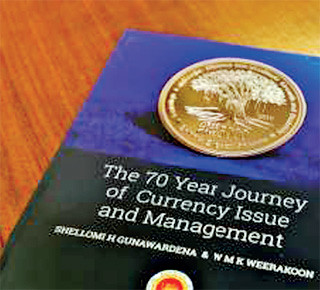 Numismatics is an art, science, hobby, and profession. Only those who collect, study, and research coins, tokens, symbols, and notes – called numismatists – would know the complexity and difficulty in practising this costly hobby.
Numismatics is an art, science, hobby, and profession. Only those who collect, study, and research coins, tokens, symbols, and notes – called numismatists – would know the complexity and difficulty in practising this costly hobby.
To help them, two researchers from the Currency Department of the Central Bank, Shellomi H. Gunawardena and W.M.K. Weerakoon, have laboriously documented the currency notes and coins issued by the Bank in the last 70-year period. The book titled ‘The 70 Year Journey of Currency Issue and Management’ has been released marking the Bank’s 70th anniversary.
The book contains seven chapters and two appendices. Gunawardena and Weerakoon have taken the readers through the historical evolution of currency in Sri Lanka from ancient times to date and how the legal structure for the Central Bank of Sri Lanka to issue currencies was framed. Coins-based means of payment had been used in ancient Lanka which had been an important trading nation from very early times. Drawing on historical records, Gunawardena and Weerakoon have documented that the earliest coins found from Lanka had been those of Indian origin with different shapes, sizes, weights, but punched with common symbols and characters. They were called Puranas or Kahapanas.
From around the 1st century CE, there were round copper and gold coins. In addition to the locally minted coins, there had been coins of Arabian, Greek, Roman, Chinese, and Indian origin testifying to the country’s role as an international trading hub in ancient times. During the colonial period beginning from early 16th century, coins belonging to the respective colonial power, namely, the Portuguese, Dutch and the British, had been in use. However, the currency system in the country had gone through major transformation only in the latter part of the 19th century under the British rule.
With this brief introduction serving as the background, Gunawardena and Weerakoon have set on to their main task of writing the book, namely, documenting the currency issue, management, and its modernisation done during the central banking era beginning from late 1950. Prior to this, currencies had been issued in the island, under a system known as the Currency Board established in 1884. Under the currency board system, there was a self-discipline in the issue of currency since it had been linked to the available foreign exchange reserves with the Board.
Gunawardena and Weerakoon have documented every fine detail of all the coins and notes issued by the Central Bank over the period covered in their study. Those details from a single source are a gold mine for currency lovers and collectors. The book that has been printed in multicolour and bound in hard cover add further value to it as a reference book. The photos reprinted are finely done, and therefore, the readers would get the feeling of seeing live currency notes when they master the book. Thus, both co-authors should be commended for the useful work they have done.
To read the complete article and press release, see:
Central Bank’s 70-year journey through currencies: A valuable guidebook for currency lovers
(https://www.ft.lk/w-a-wijewardena-columns/Central-Bank-s-70-year-journey-through-currencies-A-valuable-guidebook-for-currency-lovers/885-720825)
Special Publication by the Central Bank of Sri Lanka on The 70 Year Journey of Currency Issue and Management
(https://www.cbsl.gov.lk/en/news/70-year-journey-of-currency-issue-and-management)
Kavan Ratnatunga writes:
"That glowing review was written by a former Deputy Director of the Central Bank who is an Economist, not a Numismatist. It has sadly not been proofread carefully and missed a lot of the finer detail. The images are not to any scale and could have been a lot better. The softcover is being sold at US$5 and is worth that price for a novice collector."
NEW BOOK: DRIFTLESS GOLD
From time to time we'll see novels with a numismatic theme. These can be good fun even if the numismatic details are off. If anyone reads this one, let us know what you think. Here's an article from the La Crosse Tribune of Wisconsin, where the novel is set. -Editor
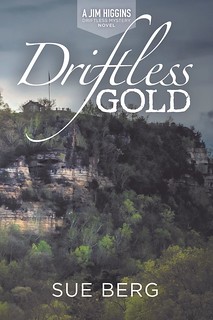 Sue Berg of rural Westby has a love for the beauty of the Driftless Area and a love of mystery novels. Those two loves have come together for her first detective mystery called
Sue Berg of rural Westby has a love for the beauty of the Driftless Area and a love of mystery novels. Those two loves have come together for her first detective mystery called Driftless Gold.
Released on April 22, the Jim Higgins Driftless Mystery novel is the first in a series of six. The series takes place in and around La Crosse, during the current time. The second book in the series will be released in December of this year.
According to the Driftless Gold
synopsis on Berg’s website, Down a Drifless Road,
: When a migrant worker is discovered partially buried in a shallow grave at a local gravel quarry, Lt. Jim Higgins is called to the scene. But things heat up when an antique gold coin in found in the dead man’s pocket. Lt. Jim Higgins begins to unravel a murder that will take him back into Wisconsin’s early history. During the investigation, Higgins meets a local archeological savant and treasure hunter who tells him a wild tale about a U.S. Army payroll that was stolen on the way to Fort Crawford in Prairie du Chien in 1866. The payroll has never been recovered. Is the coin on the dead man part of the stolen cache of valuable coins? Higgins hesitates to base his investigation on a wild tale, but he has nothing else to go on. In a race against time, Higgins struggles to identify the killer—and find the elusive gold treasure.
Berg said she tried to weave in Wisconsin history, It’s not necessarily true.
In the 1990s, when Berg was pursuing her master’s degree she was in Murphy Library at the University of Wisconsin-La Crosse when she happened across a story about a lost gold shipment.
It became a legend and that was the impetus for the book,
she said. The legend from the 1860s is woven into this story.
Jim Higgins is with the Sheriff’s Office and has a crew of three young, green detectives,
Berg said. Another character is a savant archeologist… He gets himself into a bad situation. It adds to the flavor
Berg said the second book is a standalone novel, but will have the same detective team. It will show how they change and how life changes.
To read the complete article, see:
Rural Westby author Sue Berg writes first detective mystery
(https://lacrossetribune.com/community/vernonbroadcaster/news/rural-westby-author-sue-berg-writes-first-detective-mystery/article_0105a3d8-709f-51ca-9510-3ce81ed0062c.html)
For more information, see:
https://downadriftlessroad.com/
ANS ACQUIRES THÉODORE-EDME MIONNET PAPERS
In their July 2021 ANS E-News, the American Numismatic Society announced a nice acquisition of archival materials. -Editor
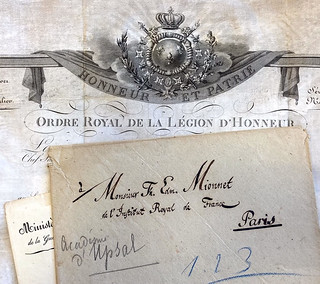 The ANS Library and Archives has acquired at auction a group of early nineteenth century certificates and letters from the French numismatist Théodore-Edme Mionnet (1770-1842). Mionnet was a deputy curator in what became the numismatic department of the Bibliothèque Nationale, and his publications include the seven-volume Description de Médailles Antiques, Grecques et Romaines (1806-1813). We thank ANS Life Fellow Hadrien Rambach for assisting with this acquisition.
The ANS Library and Archives has acquired at auction a group of early nineteenth century certificates and letters from the French numismatist Théodore-Edme Mionnet (1770-1842). Mionnet was a deputy curator in what became the numismatic department of the Bibliothèque Nationale, and his publications include the seven-volume Description de Médailles Antiques, Grecques et Romaines (1806-1813). We thank ANS Life Fellow Hadrien Rambach for assisting with this acquisition.
To read earlier E-Sylum articles, see:
NOTES FROM E-SYLUM READERS: MAY 16, 2021 : Query: M. Mionet, Curator of the French National Museum
(https://www.coinbooks.org/v24/esylum_v24n20a09.html)
MORE ON THÉODORE EDME MIONNET
(https://www.coinbooks.org/v24/esylum_v24n21a10.html)
1887 COIN DESIGN SOLICITATION
Newman Numismatic Portal intern Garrett Ziss provided the following article based on recently added digital content. Thanks! -Editor
On April 9, 1887, Director of the Mint James P. Kimball released a circular inviting artists to submit obverse and reverse coin designs for potential use on United States coinage. According to this correspondence from the National Archives, new designs were solicited for the cent, 5-cent nickel, dime, quarter, half dollar and dollar. Kimball outlined the requirements for participation in the contest and provided the opportunity for artists to study the coins in the Mint Cabinet to gain inspiration for their designs.
Word of the competition and its maximum $500 prize spread in various outlets such as local newspapers. Mrs. Lizzie Lee Godfrey of Bluff Springs, Florida, submitted a design for both the half dollar and dollar. Her dollar design featured the sword of Justice and the Star-Spangled Banner
on the obverse and a horn of plenty... and the torch of Liberty
on the reverse. Mr. O.B. Leonard of Plainfield, New Jersey, suggested a design for all silver denominations that included the profile of Columbia
on the obverse and a head of the American Bison
on the reverse.
Lardner Gibbon of Greenville, South Carolina, whose dollar design is shown above, believed that ...in the case of coins, Sentiment is required as well as beauty.
Gibbon’s obverse sketch displays a maid guiding a Mercantile Marine
to shore with a liberty cap. For the reverse, he provided context that the pictured eagle is perched close to a silver mine and is on watch because Among undomesticated Birds and Animals there is a rule for one to watch in an elevated position while their kind are busy feeding.
Unfortunately, the efforts of these artists were in vain as Kimball was forced to suspend the competition shortly after it was initiated because he lacked the legal authority to carry out his desired goal of redesigning United States coinage. It wasn’t until the passage of the Act of September 26, 1890, that the Director of the Mint, who by that time was Edward O. Leech, regained the authority to adopt new coin designs.
Link to circular announcing the coin design contest:
https://archive.org/details/circularinvitingnewcoindesigns18870409/mode/1up
Link to letter from Mrs. Lizzie Lee Godfrey:
https://archive.org/details/offersnewdesignsforcoins18870608/page/n1/mode/2up
Link to letter from Mr. O. B. Leonard:
https://archive.org/details/describescoindesignwithbison18870625/page/n1/mode/1up
Link to letter from Mr. Lardner Gibbon:
https://archive.org/details/proposedsilverdollardesign18870425/page/n2/mode/2up
Link to letter suspending the coin design contest:
https://archive.org/details/dmsuspendscompetitionfornewdesigns18870415/mode/1up
Link to 1891 Mint Report detailing the Act of September 26, 1890:
https://archive.org/details/AnnualReportOfTheDirectorOfTheMint1891/page/n67/mode/2up
NEWMAN PORTAL ADDS LANGE COIN BOARDS
For some time now David Lange has been steadily scanning his reference collection of coin collecting boards and adding them to the Newman Portal. The effort is now complete; here's the announcement. -Editor
The entire collection of vintage coin boards assembled by David W. Lange is now illustrated at the Newman Numismatic Portal under the category of Library/Image Collections/C:
https://nnp.wustl.edu/library/imagecollections?searchLetter=C
Acknowledgment is made to Leonard Augsburger for coordinating the posting of images scanned and submitted by Lange.
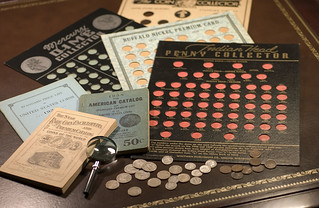 David W. Lange is the author of the standard book on this area of collecting titled Coin Collecting Boards of the 1930 & 1940s: A Complete History, Catalog and Value Guide, and he has also written three more books detailing coin album publishers and their product lines. In addition to maintaining his own reference collection, Lange buys and sells these books and vintage coin boards through his website:
https://www.coincollectingboards.com/.
David W. Lange is the author of the standard book on this area of collecting titled Coin Collecting Boards of the 1930 & 1940s: A Complete History, Catalog and Value Guide, and he has also written three more books detailing coin album publishers and their product lines. In addition to maintaining his own reference collection, Lange buys and sells these books and vintage coin boards through his website:
https://www.coincollectingboards.com/.
Check it out - this is an amazing collection to browse through. -Editor
VIDEO: 2021 SUMMER FUN CONVENTION
These are selections from the David Lisot Video Library that feature news and personalities from the world of coin collecting. David has been attending coin conventions since 1972 and began videotaping in 1985. The Newman Numismatic Portal now lists all David’s videos on their website at:
https://nnp.wustl.edu/library/multimediadetail/522852
Here's one from the recent 2021 Summer FUN Convention. -Editor
President Bob Hurst Welcomes Collectors to Summer FUN Convention 2021.
VIDEO: 7:10.
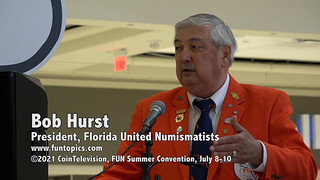 Bob Hurst, President, Florida United Numismatists, David Lisot, Video Producer, CoinTelevision.com.
Bob Hurst, President, Florida United Numismatists, David Lisot, Video Producer, CoinTelevision.com.
More than a year after the COVID Pandemic the Florida United Numismatists are holding a coin convention. This is the largest summer convention ever held with almost 300 bourse tables of dealers wanting to buy, sell, and trade coins, paper money and collectibles. FUN President Hurst celebrates the opening of the event by giving Presidential Awards to Gary Braisted, Randy Campbell, Kenny Mullins, and Bob Russell.
An excerpt of the video is available for viewing on the Coin Television YouTube Channel at:
https://youtu.be/FLwvaPC4siI
HOWARD GIBBS, PRINCE OF PRIMITIVE MONEY
See the links for the full program and schedule of the upcoming American Numismatic Association World's Fair of Money elsewhere in this issue, along with a few items readers highlighted. First up is my own talk (which includes a numismatic literature component), as described in the July 2021 newsletter No 89 of the International Primitive Money Society. Thanks to Bob Leonard for passing this along. -Editor
Our next meeting will be at the ANA World’s Fair of Money in Chicago, Friday, August 13, from 4:00 to 5:00 p.m., in Room 24 of the Donald E. Stephens Convention Center, Rosemont. An outstanding program has been secured; see below.
Wayne Homren: Howard Gibbs, Prince of Primitive Money Collecting
Our speaker will be Wayne Homren, editor of the weekly numismatic newsletter, The E-Sylum, and a consultant for the Newman Numismatic Portal. Wayne is also a member of the ANA, the ANS, the Numismatic Bibliomania Society, the Pennsylvania Association of Numismatists, and the Western Pennsylvania Numismatic Society. His subject is one of the best known members of the Western Pennsylvania Numismatic Society: Howard Gibbs, Prince of Primitive Money Collecting.
Howard Gibbs was the greatest primitive money collector of his time. An executive of the Pittsburgh Coal Company, he assembled a collection
of over 200,000 items including coins and primitive pieces from Africa, the Far East, the Pacific Islands and North and South America, at a time when many of these primitive
monies were still is circulation:
Lot 40091, Opitz
Reference CollectionAuction, March 15, 2021: Levuka Village, Island of Kandavu, Figi (sic) Group, Spondylus Shell
GoldStandard Money: Long Hair Cord with Small White Trade Beads Interwoven, ex Howard Gibbs Collection.
This collection was dispersed by Hans Schulman in
a series of auction and fixed-price sales from the 1950s
through the 1970s. Yap stones, Polynesian shells,
Ethiopian salt pieces, Swedish copper plates, ancient
Etruscan rings, and elephant tails from Kenya were all
included. Gibbs was an Indiana Jones
type who went
to great lengths to acquire prized acquisitions, and the
story of how Wayne acquired an archive of Gibbs letters
and collection records is an Indiana Jones tale in itself.
For more information on the International Primitive Money Society, see:
http://www.facebook.com/internationalprimitivemoneysociety/
EXHIBITS AND EVENTS AT THE 2021 ANA SHOW
Paul Hybert submitted this note about exhibits at the upcoming ANA World's Fair of Money. -Editor
A guide to the Collector Exhibit Area at the 2021 World's Fair
of Money is available online at:
http://www.chicagocoinclub.org/events/2021/ana/ex/all_by_cl.html
Due to the late deadline for Collector Exhibits this year, it was not possible to list the Collector Exhibits in the Show Guide. The listing is only available online this year -- we will have signs with a QR code in the exhibit area.
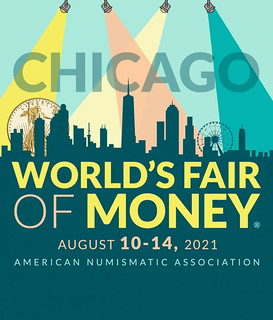 Expecting a smaller turnout due to concerns arising from Covid-19, we
use the six Classes typically used at the (Spring) National Money Show
instead of the typical 21 Classes used at a WFoM.
Expecting a smaller turnout due to concerns arising from Covid-19, we
use the six Classes typically used at the (Spring) National Money Show
instead of the typical 21 Classes used at a WFoM.
Visit this page before you arrive at the convention center to determine your must-see exhibits, or visit this page to help you remember that exhibit you want to see again! This page will be updated during the convention, to list just the exhibits which are present.
The dealer bourse will be in Hall A -- the Collector Exhibit Area will be in Hall B, along with many club tables -- it appears you will access Hall B only from Hall A. (The NBS club table appears to be in Hall A, but most club tables are in Hall B.)
The exhibit classes are: History & Politics, Economics, Geography, Common Element, The Arts and Science.
And don't miss the blockbuster exhibits that will surely attract attention. -Editor
For additional information on the show, see:
General Information
(https://www.money.org/worldsfairofmoney)
ON COIN DEALER ACCESS TO THE U.S. MINT
Bill Eckberg's item last week quoting Ed Frossard about the U.S. Mint's coin-dealing activities kicked off a great email conversation with Craig Sholley, and with their permission I'm publishing it here for our readers. Thanks! -Editor
Craig writes:
"What a neat find. I have always suspected that the turn-in of old coppers included pre-federal coppers, but could not prove it.
"I also strongly suspect they were weight-counting the coins. I cannot imagine them hand counting literally hundreds of thousands of old coppers and worn-out silver."
Bill responds:
"I am pretty sure you were the one who put me onto that bit about dealers going through the coppers that were turned in. I figured you knew what you were talking about, and eventually I came across the Frossard article. Boom! Smoking gun. He doesn’t say anything about how they did it. I’m fairly sure they kept anything that was thick, since the 1793s and 1794s are more common relative to their mintage than the later ones. And also more frequently in really low grade."
Craig writes:
"You probably read it in my old Penny-Wise article "The Mass Melting of the Early Copper Coinage".
"I'll have to credit Breen for that one, he found it in AJN. Here's the quote from the October 1868 issue of the American Journal of Numismatics:"
I quite well remember what an advantage the Mint was to us who lived in Philadelphia, for we had the privilege of going to the institution and had the privilege of selecting from trays or drawers subdivided for every date. From these I procured some excellent specimens of cents for their face value; and many of us collectors, knowing this channel, thus secured cheap cents. We also took precaution to lay aside quantities of fine pieces to trade with, and for some years afterwards, the market was well stocked with cents. The employees of the Mint, however, soon learned to know the increasing value of these coins, and also commenced laying aside the finer pieces and more unusual dates. Our game was blocked by this discovery, for we saw thence forward that the desirable cents were missing.
Craig continues:
"Levick just mentions cents, although that could include Confederation period coinage. However, we now know that for sure from Frossard and who it was! Levick and Frossard make no mention of going thru silver coinage, but it sure seems likely that those who got in and were interested in silver issues would certainly weasel their way into going thru those coins.
"BTW, I just found proof the mint was redeeming by weight. In Taxay pg 238, quoting the Philadelphia Bulletin article which says of the exchange in the 4th para, 2nd sentence, "The clerks and weighers...".
"I've read that passage dozens and maybe a hundred times over the years and "weighers" never registered until now.
"30-plus years at this and I still often feel like a beginner."
[1] Citation from Willard C. Blaisdell, Reminiscences on the Old Large Copper and Bronze Cents
, Penny-Wise, March 15, 1972, pg. 43.
Thanks. We all owe a debt to those early collectors and dealers who spared so many great old coins from the melting pot. -Editor
Craig adds:
"It's amazing how we study and study some more and still amazing finds pop out of the woodwork."
To read the earlier E-Sylum article, see:
NOTES FROM E-SYLUM READERS: JULY 25, 2021 : Frossard's Essay on Coin Collecting
(https://www.coinbooks.org/v24/club_nbs_esylum_v24n30.html)
NOTES FROM E-SYLUM READERS: AUGUST 1, 2021
On Rainbow Toning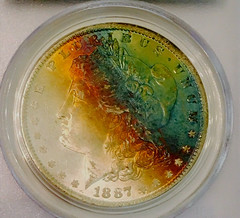 Fred Liberatore writes:
Fred Liberatore writes:
"The image of the "Rainbow Toned 1887 Morgan Dollar" quickly reminded me of the work of the coin "doctors" who have perfected this kind of toning and can do it in minutes. That sort of rainbow is characteristic of their work. There was an entire hour-long presentation at the ANA Summer Seminar in 2018 on this subject."
Steve Bishop writes:
"First of all, you can't necessarily judge a coin's toning accurately through a photo. In this case, the color rendition is off. It looks a lot more natural in hand. I've looked at a lot of toned coins over the years, and I can usually tell the difference between natural and artificial toning. When in doubt, I trust the experts at PCGS, who approved the grade and appearance of this piece."
Thanks. Photos get better and better, but nothing beats seeing a coin in person. -Editor
To read the earlier E-Sylum article, see:
WAYNE'S NUMISMATIC DIARY: JULY 25, 2021 : Rainbow Toned 1887 Morgan Dollar
(https://www.coinbooks.org/v24/esylum_v24n30a21.html)
Daniel Fearon of New Malden, Surrey, England writes:
"The medallic Canadian 20 Cents about which you report, was something new to me. I turned to Leonard C. Wyon’s diaries, edited and with extensive notes by Philip Attwood and published by Spink in 2014 - Hard at Work - The Diary of Leonard Wyon
. George William Wyon does not get many mentions, however it does seem he worked on the Canadian coinage in 1858, providing a drawing for the one-cent, for Leonard to work with. But the diary makes no further mention.
"On 27 March 1862 LCW writes, I went this afternoon to the Mint in consequence of a letter I received from Mary Wyon telling me of the increased illness of her brother George. He was too ill to see me. I took with me 2 bottles of port, 1 of rum, and some jelly
.
"And on the 28 March, Early this morning George Wyon died
. With that LCW carried on with life and, with his wife, went in the evening to tea at the O’Neils’s’" [the painter George Bernard O’Neil].
"The medal is dated the 27th, so perhaps George died before midnight, rather than the early hours of the 28th. One hopes the poor young man rallied before he went and was able to sample the two bottles of port and the bottle of rum."
Interesting. As good a last meal as any. Thanks. -Editor
To read the earlier E-Sylum article, see:
MEDALLIC MEMENTO OF GEORGE WILLIAM WYON
(https://www.coinbooks.org/v24/esylum_v24n30a23.html)
David Tripp passed along this article with more on Robert Garrett from his grandson Jim Garrett. Thanks. -Editor
The legacy of Robert Garrett lives on today through athletics and history.
It was 125 years ago in the summer Olympics of 1896 that Garrett was making headlines, competing along with about 240 others.
His grandson, James, said Garrett kind of stumbled into it. He was studying at Princeton University and was on the track team. His professor brought up the idea of going to Greece.
"They had a blacksmith locally in Princeton make a disc, what they thought a discus was, about a foot wide, and it weighed almost 30 pounds to 27 pounds," James Garrett said.
That was nearly impossible to move, let alone toss. Americans didn't know the actual size of the Greek discus, so they took their best guess. The uncertainty didn’t stop them from taking the very long journey east.
Garrett grew up at the Evergreen House on North Charles Street, which is now a museum and library belonging to Johns Hopkins. He became known as the last, first Olympian, passing away in 1961.
Garrett was also a passionate collector of ancient manuscripts, collecting 11,000, which is said to be the largest collection in the U.S. He ended up donating them to alma mater, Princeton University.
To read the earlier E-Sylum article, see:
FIRST PLACE MEDAL AT THE 1896 OLYMPICS
(https://www.coinbooks.org/v24/esylum_v24n30a15.html)
Kavan Ratnatunga of Sri Lanka writes:
"Since reading an earlier E-Sylum article asking if coronavirus stimulus checks Would be collectible, and another one about their security features, I was interested in a US Treasury cheque for my collection.
"So on April 15th when I submitted my US Tax Return, I requested US$12 of my tax refund by cheque and the rest directly deposited as usual. The Bank Deposit went in on April 28th and when I got no check I assumed it had gotten lost. Then after 3 months on July 27th, it arrived, dated April 30th, and reposted by registered mail by the US Embassy in Colombo on July 12th. A great low-cost collectible. :-)
'The Treasury cheque has a watermark and cool security features under UV light as described. The Security features are illustrated well in the 2020 December document. What I found interesting is the microprinting on the back. I did not identify it with the reference posted previously in The E-Sylum. It is a 0.2mm high line with USA repeated."
Our webmaster Bruce Perdue kindly edited Kavan's image to make the text more readable. Thanks. -Editor
Kavan adds:
"A good challenge to test a scanner. Mine gave the above image - 10 pixels high at 1200 dpi. Will not resolve at 300 dpi.
"Guessed correctly what numbers I need to enter for Symbol Serial which is 4+8 digits at the right end of the first line starting with Date and RTN which is 9 digits on the second line below the date without leading 000. The system replied
Check Verified Status: Issued."
To read the earlier E-Sylum articles, see:
WILL CORONAVIRUS STIMULUS CHECKS BE COLLECTIBLE?
(https://www.coinbooks.org/v23/esylum_v23n16a33.html)
CARES ACT TREASURY CHECK SECURITY FEATURES
(https://www.coinbooks.org/v23/esylum_v23n18a29.html)
George Kolbe writes:
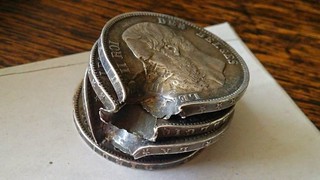 "Early on, in pre-computer times, I sold a book imbedded with shrapnel. I wish I had kept it. It was a British Museum Catalogue of Greek coins volume that appears to have been among various British Museum catalogues that were in storage in London during the 1940-41 German bombing campaign."
"Early on, in pre-computer times, I sold a book imbedded with shrapnel. I wish I had kept it. It was a British Museum Catalogue of Greek coins volume that appears to have been among various British Museum catalogues that were in storage in London during the 1940-41 German bombing campaign."
That would be an interesting piece of numismatic literature! -Editor
To read the earlier E-Sylum article, see:
NOTES FROM E-SYLUM READERS: JULY 25, 2021 : WWI Soldier's Coins That Stopped a Bullet
(https://www.coinbooks.org/v24/esylum_v24n30a12.html)
Bob Van Arsdell writes:
"The last E-Sylum passes along the discredited opinion that readers should wear gloves when handling rare books. I thought it had been established many years ago that gloves make people clumsy and increase handling damage.
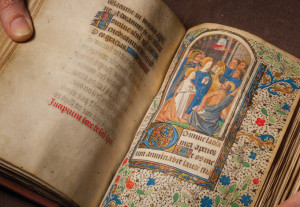 "I’ve been handling books from the early 16th century to the present for over 40 years and would never use gloves. If my hands aren’t clean enough to handle books, I solve that problem first.
"I’ve been handling books from the early 16th century to the present for over 40 years and would never use gloves. If my hands aren’t clean enough to handle books, I solve that problem first.
"I suspect this glove misinformation may have been resurrected because of Covid-19. Some recommendations suggest contaminated books could be handled with gloves while decontaminating them. I doubt this has become standard practice, because Covid safety procedures have evolved rapidly as we learn more about transmission modes."
Sorry about that - I should have commented on that mention. The primary discussion was about face masks, which come in handy for limiting damage from sneezes or nosebleeds. Bob passed along a couple article links. Thanks. -Editor
To read the complete articles, see:
Gloves or No Gloves? On the Proper Handling of Rare Books & Manuscripts
(https://library.pdx.edu/news/the-proper-handling-of-rare-books-manuscripts/)
Misperceptions about White Gloves
(https://www.betweenthecovers.com/btc/articles/49)
Lev Messick responds:
"Well, I certainly would not let any of these folks near my stamp and banknote collections. I know you are aware that we collectors use a tool called tongs for stamps. I can assure you from personal knowledge that handling a mint stamp without them will leave fingermarks. Yes, there is a famous stamp from Monaco that shows a six fingered FDR holding a stamp that way! Not recommended no matter how many fingers you have.
Some banknotes also exhibit so called "Counting Marks" (AKA creases and fingermarks along their corners and edges) Now, yes, often these were from dirty as well as oily hands. I don't think we should add more oil from our hands to them. There is an interesting film showing the restoration of the Jefferson Bible at the Smithsonian that shows the restoration team wearing both masks, gloves, and using a tool (not their hands) to turn the individual book pages. So, I would say the jury is still out on pawing the Declaration of Independence or other elderly documents with your bare hands (LOL).
Those of us who collect are only temporary guardians of our collections. The use of proper conservation materials and proper handling and storage is necessary to preserve what we have. As a child 70 some years ago I was taught not to handle photos with bare fingers -washed or not. Books were to be handled very carefully so as not to break their spines or crease, mark, or tear their pages. Older paper was generally made from rag material. It tends to be rather long lasting if properly cared for and protected. The use of wood pulp has made many modern books and paper very transient. "
To read the earlier E-Sylum article, see:
NOTES FROM E-SYLUM READERS: JULY 25, 2021 : On Examining Precious Documents
(https://www.coinbooks.org/v24/esylum_v24n30a12.html)
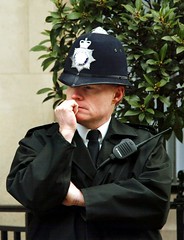 David Powell writes:
David Powell writes:
"Over here in the UK, Copper
is a widely-used slang term for a policeman, and has been since the mid-19th century, so a site with the term Early American Coppers
as the main constituent of its name might not immediately be appreciated as being numismatic!"
To read the earlier E-Sylum article, see:
NOTES FROM E-SYLUM READERS: JULY 25, 2021 : : Website Name Origin Stories: eacs.org
(https://www.coinbooks.org/v24/esylum_v24n30a12.html)
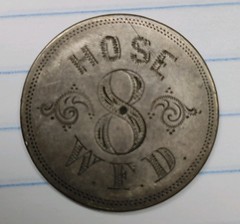 David Hoover writes:
David Hoover writes:
"I have attached a picture of what I imagine to have been a fire department badge from the mid 1800s. It is on the reverse of an 1854 seated half dollar. I have tried to figure what fire department this may have been without any luck. I did see another one pictured, with a pin still attached to the back, but that didn't provide me with any more information. Perhaps you or your readers might know more about it."
Interesting item. Can anyone help? -Editor
Gary Greenbaum writes:
"I thought this might interest your readers. These are shots of the exhibits at the shopping area at Icy Strait Point, which is a cruise stop near Hoonah, Alaska, showing the trade tokens from there. Regrettably, none were for sale!"
Cool. Thanks! -Editor
David Luftig passed along this word jumble cartoon. Who got the answer? -Editor
I found this one over on the Coin Talk forum. -Editor
Which reminds me - I'm still cracking up over this one from a few weeks ago. -Editor
To read the Coin Talk item, see:
Your Tuesday Laugh
(https://www.cointalk.com/threads/your-tuesday-laugh.384117/)
To read the earlier E-Sylum article, see:
COIN UNIVERSITY PROGRAM IN SAN FRANCISCO
(https://www.coinbooks.org/v24/esylum_v24n21a17.html)
ALBERT KUNER COPY OF ECKFELDT-DUBOIS SOUGHT
Bob Cassling is a collector and researcher of Pioneer/Territorial gold coins from the California Gold Rush (1849-55). He is currently working with Doug Winter and Ron Guth searching for a very specific book from the California Gold rush era. He provided this background on his project. -Editor
Albert Kuner was a master engraver in San Francisco during the California Gold rush era, engraving numerous now iconic coins, including the 1849 Norris Greg and Norris $5, 1849 Moffat $5 and $10, 1850 Schultz $5 as well as the most iconic coin of that era, the 1850 Baldwin (Horseman) $10 and several others.
According to Edgar Adams 1912 book, Private Gold Coinage of California, Albert Kuner annotated his personal copy of the 1851 (Second Edition) Eckfeldt and Dubois book, Gold & Silver Coins and Bullion, with a "memorandum in his own handwriting over each illustration of the various California coins engraved by him".
I am looking for the location of his personal copy and/or a digital version.
Can anyone help? My copy has no annotations; Dan Hamelberg has three copies, but none fit the bill.
FWIW, there is a copy of the book in this month's Holabird sale, but it's not described as having annotations. See the article elsewhere in this issue. -Editor
Bob adds:
"I am also looking for some reference as to who were the engravers at the Philadelphia Mint, besides Longacre, from late 1848 to mid 1849. The National Archives are of no help. Ron Burdette sent me some information, though no specific names during that period of time.
"This is part of the bigger Territorial coin project regarding Albert Kuner."
VOCABULARY TERM: FERROTYPE
Here's another entry from Dick Johnson's Encyclopedia of Coin and Medal Terminology. I added an image of a Lincoln ferrotype campaign badge. -Editor
Ferrotype. An early photograph contained in a metal frame, always diestruck. The "iron type" photograph was one of several early photographic processes. Where ferrotype gets its name was a photo image on very thin sheet of coated iron, a process called Japanning, but was more popularly called tintype. These photo images became widely used for campaign items, particularly for U.S. presidential candidates. Tiny photos were inset in metal frames most often made into lapel or larger pins for wearing. The diestruck frames, made of white metal, or more commonly of brass, were designed with decorations, occasionally with lettering. All ferrotypes are fragile and the photo images fade when exposed to strong light. Infrequently two photos – as presidential candidate on one side, vice president on the other – were made into a two-sided ferrotype.
The use of ferrotypes grew from the many diestruck medals made in the 19th century for presidential elections. It was a way of informing an electorate of what the candidate looked like and occasionally bore a very brief campaign slogan (in a time when communication was not that rapid and illustrations of candidates were nearly nonexistent).
Despite the many steps in their manufacture, ferrotypes could be manufactured at a lower cost than solid diestruck items. Even though ferrotypes somewhat replaced earlier medallic forms, they, in turn, were completely replaced by the later inventions of the lithographed and celluloid pins.
History of the ferrotype. The combination of a photo inset in a frame was a unique development in the Connecticut Valley of New England which had a vibrant metalworking industry and early embraced photography. In 1856 D.F. Malby of Waterbury invented malainotypy, the process of Japanning or placing a photo image on a coated sheet of highly polished black enameled metal; the photo image appeared as shades of gray in contrast to the black enamel. Earlier photographic processes had been used to illustrate candidates, including daguerreotype (first used in the presidential campaign of 1848) and ambrotype (1854).
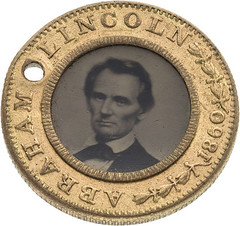 Ferrotypes were widely in use in the 1860 elections when Abraham Lincoln ran against three opposing candidates including Stephen Douglas. Three different Lincoln images were incorporated in more than sixty different kinds of ferrotype frames (Lincoln's photos are dated by the absence, or presence and the length of his beard).
Ferrotypes were widely in use in the 1860 elections when Abraham Lincoln ran against three opposing candidates including Stephen Douglas. Three different Lincoln images were incorporated in more than sixty different kinds of ferrotype frames (Lincoln's photos are dated by the absence, or presence and the length of his beard).
The ease of trimming the thin sheet metal for the frames led from the early circular or oval form to unusual shapes often made into larger items for wearing, called shell badges. After diestruck and trimmed, the piece was pierced. The photo was cut out from a sheet with many images and inserted within the frame then crimped closed. Occasionally a ferrotype shell badge was hung from a header – itself a shell and often a spread-wing eagle – to form a multiple-part badge. The ribbon used to connect the two elements was commonly an American flag or a red-white-blue ribbon.
Ferrotypes were last used in the 1888 presidential campaign. Celluloid buttons were developed and completely replaced them in the next presidential election, in 1892.
To read the complete entry on the Newman Numismatic Portal, see:
Ferrotype
(https://nnp.wustl.edu/library/dictionarydetail/515893)
HARVEY STACK'S NUMISMATIC FAMILY, PART 101
The latest article in Harvey Stack's blog series continues with the year 1986, including the collections of James Walter Carter, Margaret Woolford Carter and Lester Bernstein. Thanks! -Editor
In 1986 the United States Mint decided to expand the scale of their "rare coin business," selling lots of new products at a profit, to both beginning and advanced collectors. This included special issue commemorative coins and bullion issues that were sold above current bullion market prices. This was in addition to the millions of coin sets that the Mint had been issuing since after World War II, prices of which had been driven up by the increase in the cost of silver. The Mint had a prestige place in the system and could sell their products using the advertising slogan: "An Investment for the Future." This marketing appeared in many numismatic and non-numismatic publications and appealed to parents and grandparents. The Mint in 1986 created the Eagle coinage, eventually issued in both gold and silver and bearing no denomination, only weight and fineness. These were also a source of profit for the Mint and were heavily promoted. The mass sales attracted by the Mint took sums of money out of the standard coin market and had a negative effect on the general numismatic marketplace. Old timers became concerned about the influence this would have on the value of their collections, and current collectors saw prices drop somewhat. This led some to bid more conservatively or to just sit back during the year and see what would happen.?
Stack's retail and mail order business dropped somewhat, consignments dropped in size and importance, so we too experienced the economic pressure. Luckily, we still had a quantity of gold coins from our partnership with Manfra, Tordella and Brooks, (MTB) that we could sell to keep active. We also had received contracts from several international banks to sell United States and World gold coins that had been in storage since World War II and later in their European branches. So, Stack's managed to stay busy.
Even with all the changes in the hobby, Stack's continued to attract some great collections for 1986, with the result that we produced 10 different catalogs for our public auctions during the year. In January and March, we were pleased to present the collections of James Walter Carter and Margaret Woolford Carter, cabinets we had helped to build over the past few decades. James attended many of our auctions, sat in the back row, watched how others bid and built two United States gold coins collections for him and his wife. He loved the competition at the sales, made a number of great buys, and assembled many great rarities.
As the Carters wanted each collection sold separate from the other, we scheduled James Carter's one in January and Margaret's in March. The January auction featured a choice collection of gold dollars, 1849-1889, early quarter eagles from 1796 to 1838, an almost complete set of $3 gold, a $4 Stella, early half eagles, 1795-1837, and early eagles from 1795 to 1804. There was also a full set of Indian Head $10 coins and quite a complete set of double eagles, including rare New Orleans and Carson City coins and Proofs of the 1880s. Most of the coins graded at least About Uncirculated, and there were many Mint State and Proof coins. Overall, it was an outstanding offering. The March auction featured the gold coins from Margaret's collection. As she also liked silver, copper and nickel coins, there were partial or complete sets of these included in the Part II offering.
When we first met the Carters, we learned that they were both strong supporters of conservation of wild animals and were great contributors to various efforts to protect wild and disappearing animals. They were particularly fond of giraffes and a large portion of the proceeds from the sale of their coins went to the Bronx Zoo to build the Carter Giraffe Building where these creatures could be protected and raised. I learned that five different male giraffes were born at the Bronx Zoo and were named James 1 up through James 5 in recognition of the Carters' generosity.
In the spring (April/May) we once again hosted an auction at the annual Metropolitan New York Numismatic Convention. The first catalog produced for this event featured the Lester Bernstein Collection of United States Coins. Starting with half cents, Lester built a compressive, high quality set of Mint State and Proof examples in many American series. When he found pieces he needed, he would drive to New York, attend our sales, and capture most of what he wanted. Lester ran a string of parking lots in the Virginia and Maryland area and started collecting when he went through all the coins he received as parking fees. He developed a love of chasing after the best ones he could find to fill out his growing collection. But Lester had another hobby, which he showed to me when I visited his home to pick up his collection as he had decided he was ready to sell. I was amazed to find that he also collected lamps that were used by coal miners, and he had over 2,000 different types and designs, in very nice condition. Most were oil burning lamps, many were worn on the hats of the miners, or had been located about the mines in order to see while they were working. Because I was so interested in the collection and Lester's stories about it, he gave me one of his duplicates. I will never forget his hospitality. I have so many similar stories of the welcome I received whenever I visited with my collector clients, great memories I keep to this day.
The second catalog for the 1986 Metropolitan New York Convention had a comprehensive collection of United States coins and paper money as well as a special offering of foreign coins. As always, we tried to be sure our convention auctions featured a wide variety to satisfy the collecting interests of those who attended the collection. Our 1986 "June Sale" was a similar event that offered a group of collections for our general United States clients. In August we participated with our three other dealer friends to present Auction '86, once again a joint effort that was a great success.
We had three more auctions in 1986, in September, October and December, the last of which had two catalogs, one for United States coins and one that brought ancient and world coins to the auction block. It was not a year in which we presented huge "name" collections. However, we continued to provide the services our clients wanted, and we were able to realize good prices for our consignors. At the same time, we were adjusting to the changes in the hobby that came along with the new grading services and the U.S. Mint's expanded promotional efforts.?
To read the complete article, see:
Harvey Stack Remembers: Growing up in a Numismatic Family, Part 101
(https://www.stacksbowers.com/News/Pages/Blogs.aspx?ArticleID=harvey-stack-remembers-part-101)
To read the earlier E-Sylum article, see:
HARVEY STACK'S NUMISMATIC FAMILY, PART 100
(https://www.coinbooks.org/v24/esylum_v24n29a18.html)
THE BOOK BAZARRE
EDGAR HOLMES ADAMS
Last week Pete Smith asked, "What member of the ANA Numismatic Hall of Fame won an Olympic medal?" That's a tough one - no one had a guess this time. Here's Pete's article. -Editor
The answer is Edgar Holmes Adams.
Adams was born in Grafton, West Virginia, on April 7, 1868. When he was twelve years old (1880), Adams tripped over a loaded shotgun, the gun went off and Adams was shot in the leg. He was home-schooled and took up the hobby of numismatics as a sedentary activity. In later life, he walked with a cane. Adams married Sarah Sadie
Ellen Degnan in 1895. They had no children.
Adams took up swimming for exercise, got to be competitive and joined the New York Athletic club. He competed in the Plunge
for the Metropolitan AAU and was the champion for 1902 to 1905.
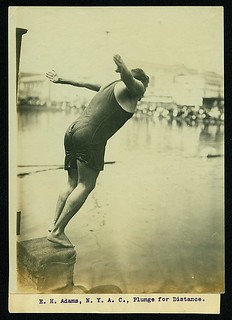 At the 1904 Olympics in St. Louis, there were five competitors, all American, in the
At the 1904 Olympics in St. Louis, there were five competitors, all American, in the plunge for distance
event. The athlete jumps into the water and coasts under water without any effort at propulsion. The one who travels the greatest distance under water is the winner. Adams placed second and was awarded a silver medal.
Adams wrote a numismatic column for the New York Sun. In one of his columns he recommended the formation of local coin clubs. He followed up as one of fourteen founders of the New York Numismatic Club in 1908.
He contributed regular articles to The Numismatist after 1908. He and his wife regularly attended the ANA conventions. In 1912, Adams became the first paid employee of the American Numismatic Association and received $60 per month as editor of The Numismatist. He continued in that role until 1915.
On February 10, 1911, he conducted an auction of pattern coins that were duplicates from the collection of William H. Woodin. In 1912 he ran an ad in The Numismatist offering pattern coins. Then in 1913 he and Woodin published United States Pattern, Trial, and Experimental Pieces based primarily on the collection of Woodin.
Adams wrote several books on numismatic topics that included California gold coins, pattern coins, Hard Times Tokens and Store Cards. He exhibited coins from his pattern collection at ANA conventions and at the ANS. A group of 350 pattern coins from his collection was sold at auction in 1935.
Late in life, Adams was an invalid confined to his home. He died at home on May 5, 1940, and is buried at Bayville Cemetery in Bayville, New York.
In 1969 he was inducted into the American Numismatic Association Hall of Fame.
For next week, Pete asks, "Returning to an athletic field for next week’s E-Sylum Smarty-Pants Award, what American numismatist was the step-father of football’s Johnny Unitas?" -Editor
To read the earlier E-Sylum article, see:
FIRST PLACE MEDAL AT THE 1896 OLYMPICS
(https://www.coinbooks.org/v24/esylum_v24n30a15.html)
THE 2020 SUMMER OLYMPIC MEDAL DESIGNS
Back in December 2019 we discussed the design of the 2020 Summer Olympic medals. Well, things didn't go as planned. The Olympics were not held in 2020 due to the pandemic, and instead the "2020 Olympics" opened in Tokyo in 2021. The medals still say "2020".
Here's an excerpt from a July 22 USA Today piece about the medals. -Editor
It won't be long before the first medals of the 2020 Tokyo Olympic Games are handed out, as a total of seven sports will be giving out the honors the day after the opening ceremonies.
In 2016, 973 medals were given out during the Games in Rio de Janeiro, and there will only be more with the addition of new sports like 3x3 basketball, softball and skateboarding. In total, approximately 5,000 medals were made for the games.
While each gold, silver and bronze medal includes some of the same elements as years past, each host city puts its own twist into what the medals look like so no two games look the same, and this year is no different. Here is everything to know about the medals that will be handed out this year.
What do they look like?
All medals must have certain emblems on them. According to the International Olympic Committee, medals must include: The Olympic five rings symbol, Nike, the Greek goddess of victory, in front of the Panathinaikos Stadium and the official name of the games. This year's games are officially called the Games of the XXXII Olympiad Tokyo 2020.
The unique twist on this year's medals reflect their theme, which is "light and "brilliance" as they are meant to resemble rough stones that are now polished.
The medal's patterns of light represent athlete energy and "those who support them." The design symbolizes diversity, while the "brilliance" represents "the warm glow of friendship" around the world, according to the Tokyo Olympic Committee.
The name of the event the competitor competed in will be engraved on the side of the medal in English.
The medals are attached to a victory medal ribbon that is, "designed to be a reflection of Japan itself and of the way the country demonstrates 'Unity in Diversity.'" Winners are also given a unique wooden medal case. No two cases are the same.
To read the complete article, see:
Gold medals not entirely made of gold? Here's everything to know about the medals at Tokyo Olympics
(https://www.usatoday.com/story/sports/olympics/2021/07/22/2020-olympics-tokyo-gold-silver-bronze-medals/8046071002/)
Curiously, the article only shows one side of the medal. Here's what the other side looks like. -Editor
To read the complete article, see:
Tokyo 2020 Olympic Medal Design
(https://olympics.com/tokyo-2020/en/games/olympics-medals-design/)
As noted in the 2019 article, the medals are made with recycled materials. -Editor
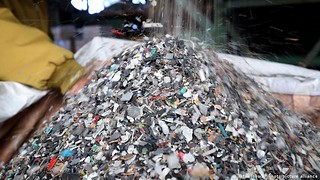 For the people behind the Tokyo Medal Project, they'll be happy that those Olympic medals are there in the first place.
For the people behind the Tokyo Medal Project, they'll be happy that those Olympic medals are there in the first place.
The project recycled old electronic gadgets such as smartphones and laptops to produce the Olympic Medals that are being awarded at the Tokyo Games.
For the people of Japan, the project offered a unique opportunity to be a part of the Games.
"The campaign called on the public to donate obsolete electronic devices for the project," Toyko 2020 spokesperson Hitomi Kamizawa told DW. "We are grateful for everyone's cooperation."
The project capitalized on the fact that billions worth of precious metals such as gold and silver, which are used in electronic devices, get discarded each year globally thanks to people simply dumping or burning their gadgets instead of ensuring they are properly collected and recycled.
To read the complete article, see:
Tokyo 2020: Olympic medals made from old smartphones, laptops
(https://www.dw.com/en/tokyo-2020-olympic-medals-made-from-old-smartphones-laptops/a-58325432)
To read the earlier E-Sylum article, see:
LOOSE CHANGE: DECEMBER 29, 2019 : Made From Recycled Electronics for 2020 Olympic Medals
(https://www.coinbooks.org/v22/esylum_v22n52a29.html)
THE OLYMPIC MEDAL MARKET
The New York Post published a great article on the aftermarket for Olympic medals. Here's an excerpt. Be sure to see the complete article online. -Editor
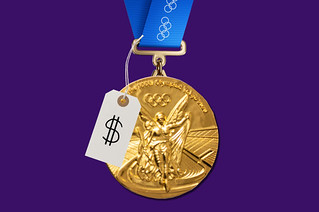 At this year’s Tokyo Olympics, 339 medals will be awarded — the culmination of the athletes’ life’s work. Yet winning gold doesn’t necessarily guarantee a life of luxury.
At this year’s Tokyo Olympics, 339 medals will be awarded — the culmination of the athletes’ life’s work. Yet winning gold doesn’t necessarily guarantee a life of luxury.
After Greg Louganis captured double Olympic gold in Los Angeles in 1984 — a feat he repeated four years later in Seoul — he was acclaimed as possibly the greatest diver in history.
But financial woes,
as he wrote in a Vox essay, left the champion facing foreclosure on his Malibu home. By 2012 things were so dire, he turned to Ingrid O’Neil.
She runs an eponymous auction house in Corona del Mar, Calif., specializing in Olympic memorabilia. Several years ago, Louganis’ partner called her, explaining that the diver wanted to sell some of his medals. He wanted $100,000 for each medal,
she said. I told him I didn’t think I could sell them for that amount. Nowadays, though, I think it would be possible.
Louganis managed to sell his house rather than give up his gold, but it’s still shocking. While there are players’ unions for leagues such as the NFL and the NBA, it’s harder for most Olympic athletes once their competitive careers are over. Often, the medals they’ve won represent one of the few assets they can realize in their retirement.
The market is strong for Olympic medals when they come up for sale but it depends on a number of factors, such as the event,
said John Millensted, head of the Coins & Medals department at Bonhams auction house. That said, it’s not often you get living athletes selling their medals. It tends to be the next of kin after the original recipient has passed away.
Hoops star Vin Baker (left) let his gold go for $67,643. Fellow 2000 Olympics star swimmer Anthony Ervin (right) sold his for $17,101.
Sometimes, even athletes from a high-profile sport such as basketball end up auctioning their gold medals — as has been the case with former Team USA players Vin Baker (Sydney 2000), Walter Davis (Montreal 1976) and Jerry Lucas (Rome 1960).
It’s unusual for basketball players to do it, but you can see why [some] sell them,
said Robert Raiola, director of Sports & Entertainment Group at accounting firm PKF O’Connor Davies. The issue is, they don’t have a regular income and they spend so much time working on their craft that it’s almost inevitable that some struggle when their competing days come to an end.
(The United States Olympic and Paralympic Committee [USOPC] pays athletes $37,500 for winning gold, $22,500 for silver and $15,000 for bronze.)
Olympians do occasionally unload their medals in the name of charity: US swimming champion Anthony Ervin auctioned his gold, from the 2000 Sydney games, in 2004 and donated the $17,101 to India tsunami victims.
To read the complete article, see:
Why some Olympic athletes have had to sell their gold medals
(https://nypost.com/article/why-some-olympic-athletes-sell-their-medals/)
SAN FRANCISCO COIN UNIVERSITY A SUCCESS
In May we discussed plans for a new "Coin University" program organized by Seth Chandler of Witter Coin Co. in San Francisco. Here's a report from instructor John Brush. This is an excerpt from his David Lawrence Rare Coins blog - see the complete article online for more. -Editor
About four months ago, I was asked by my friend, Seth Chandler, owner of Witter Coin, if I’d like to be involved with Witter Coin U. With the absence of the ANA Summer Seminar the last two years, he wanted to do something for the youth that have missed out on two huge summer numismatic events that have long been the most important aspects of the ANA’s educational outreach. For me it was a wholehearted I’m in
, though I didn’t quite know what to expect.
I joined numismatists from places you may have heard of: PCGS (Steve Feltner), Heritage (Jim Stoutjesdyk), Witter (Seth Chandler), Kagin’s (David McCarthy), and two folks that have flown under the retail radar, Devin Hipp and Dr. Kevin Kauffman (yes, a real doctor, not a coin doctor) in teaching a weeklong course on numismatics. The 25 students that joined the event ranged from age 13 to 21 and came from all over the country.
While I was very active in the YN (young numismatists) circuit of activities 20 years ago and 10 years ago, my family and work responsibilities have kept me away in recent years. So, I didn’t know any of these students before I walked in. And I walked away so impressed with these folks. While most of the students found out about the program through Instagram, several heard from other more traditional media sources. When we arrived, we learned that many of these kids knew each other for several years, but they had never met! I always knew that the hobby was based on relationships, but I had no idea that social media would bring so many folks together.
About a mile or so from the host hotel, I got a ride, and started meeting YNs left and right. And boy was I impressed! Many of these kids hadn’t handled many coins at all, but their knowledge was incredible. It was then that I realized that this was going to be a fun challenge.
Thankfully the instructors had taught similar coin grading classes in the past, but with the flexibility to teach whatever we wanted, we added an entire day discussing the general concepts of the business/hobby and resources that are available to folks, professionally and as collectors. The whole goal was to prepare them for any issues that they may run into as collectors or dealers. These Coin Dealer Ethics
conversations were a blast to discuss, and as some were very complicated, these conversations carried over into the week. Once we returned to the hotel from dinner, we would run into 10-20 students in the hotel lobby showing or discussing coins and just hanging out. It was in these times that we REALLY got to learn more about the students and their interests.
I learned about jewelry from one of the students who worked at a jewelry shop over the past few years. And while I learned about stones I had never heard of, I also learned about Anabaptist Thalers from another young man. Lastly, my mind was blown when I was introduced to a YN who has been putting together YouTube videos about coins over the past few years. My initial thought was That’s cute. I’ll follow the channel to add a viewer to his ranks. Hopefully we can add a few viewers this week and maybe he’ll have a few hundred.
Well. When I took a look, he had 80,000 followers! At that point, I realized that these kids weren’t really kids. These folks are the future of our hobby and could be THE leaders in just a few years.
Every single one of them had something special about them. Whether it was knowledge from books, studying the hobby, or studying coins…or experience from antiques and jewelry. All of them brought a passion and their own on the hobby. Among them was a girl who inherited a collection and decided to grow it with her father…and she's only 13 and has the most organized collection I’ve ever seen. As well as a student who wants to be a teacher of numismatics to kids himself in the future. I was truly amazed when a young man from rural Alabama told me he was going to study actuarial science with a full scholarship and a goal of building algorithms to price coins.
I’m leaving out the folks who set up at flea markets in their town and have built a business around selling steel cents, the midwestern and western US boys that have been working as coin dealers for several years, the young people working for coin dealers currently, and the young man who got into the hobby six months ago after having a horrific accident. The fact that he’s created a business buying mint and proof sets in his hometown purely through social media shows me that the future of numismatics has much hope. There were so many stories that I heard this week that I can’t even share them all. These students are going to places all over the country and are making a difference in their own way and it really does get me excited about our hobby’s future.
While I hope the ANA Summer Seminar is able to reinvent itself next year, I’m 100% in on Witter U next year. The opportunity to give back to the hobby in this way was something that was so incredibly rewarding and I trust the new relationships that have been forged are something that will continue far into the future. Seth: thanks for allowing me to be a part of this, I can’t wait to do it again!
To read the complete article, see:
Coins We Love: The Future of the Hobby is Bright
(https://blog.davidlawrence.com/coins-we-love-the-future-of-the-hobby-is-bright/)
To read the earlier E-Sylum article, see:
COIN UNIVERSITY PROGRAM IN SAN FRANCISCO
(https://www.coinbooks.org/v24/esylum_v24n21a17.html)
SELECTIONS FROM HOLABIRD AUGUST 2021 SALES
Here are some lots that caught my eye this week in the upcoming Holabird sales. -Editor
Lot 4340: Bechtler Carolina Dollar
PCGS AU 55; K-4 N Reversed. Obv.: Bechtler / 28 G / ; Rev.: Carolina / Dollar / O N E (N reversed). Christoph Bechtler was born in 1782 in Germany. At the age of fifteen, he was apprenticed to a gold and silver metallurgist and gunsmith. In 1829, he emigrated to the United States and landed in New York, moved to Philadelphia, applied for citizenship, and soon thereafter opened a jewelry and clock repair business. In 1830 the Bechtlers moved to Rutherford County, North Carolina and purchased a tract of land 3 1/2 miles north of Rutherfordton. It is suspected that they had heard of the recent gold strikes in the area. In July, 1830, Bechtler announced in the North Carolina Spectator and Western Advertiser
, a regional newspaper, that he had opened a jewelry and watch clock repair business in Rutherfordton.
In 1831, the local miners and merchants petitioned Congress to establish a branch mint in the gold producing region, but the petition was ignored. Shortly thereafter, several miners approached Bechtler and convinced him to assay their gold and convert it into coins. Bechtler advertised in the North Carolina Spectator and Western Advertiser
that he was ready to convert raw gold into coins at his home. Bechtler made his own dies, planchets, presses and other equipment. Late in 1831, the Bechtlers produced the first gold dollars struck in the United States. The Bechtlers produced three denominations; $1, $2.50, and $5, and the coins were struck in three finenesses; 20 carats, 21 carats, and 22 carats. The coins were of honest weight and any variation in fineness was due solely to the limited technology at the time.
After the opening of the Charlotte and Dahlonega Mints in 1838, Bechtler’s production began to decline. In 1840, Bechtler filed a report with the United States Treasury Department showing that he had coined $2,241, 840 from 1831 to February, 1840. The Bechtlers were the most successful, prolific and long lasting of all the pioneer and territorial minters. The coins were well accepted across the Southeast and some Confederate contracts specified payment in Bechtler gold.
Private southern gold coinage made history. I've always had a soft spot for these coins even though I've never collected them. -Editor
To read the complete lot description, see:
C. Bechtler Dollar K-4 (N reversed) [135224]
(https://holabirdamericana.liveauctiongroup.com/C-Bechtler-Dollar-K-4-N-reversed-135224_i42191849?t=HEBSS12)
Lot 4418: Daughters of the Confederacy Galvano
This 5-1/4-inch galvano-negative was designed by Medallic Art Company for an award medal given by the The Daughters of the Confederacy WWII. The final struck piece was a 1-3/8-inch Maltese cross-shaped item bearing the Latin words FORTIS, CREANTUR, FORTIBUS, 1861-1865 (dates of the American Civil War) and 1941-1945 (dates of WWII). The metal piece would have been suspended from a colored ribbon with a pinback at the top. Would have been cataloged as MACo-1946-031.
See other galvano items in this auction for details on Medallic Art Company and how this was made. It is extremely rare for items like this to appear on the market, and it probably surfaced after the 2016 bankruptcy of Northwest Territorial Mint which had purchased Medallic Art Company in 2009. Approx 6 inches in diameter and weighs about 12 ounces. The back of the galvano is still coated with soft wax, and the copper electrode wire is still attached.
Great exhibit-worthy piece of numismatic history. -Editor
To read the complete lot description, see:
Medallic Art Company Original Galvano-Negative for Daughters of the Confederacy [137094]
(https://holabirdamericana.liveauctiongroup.com/Medallic-Art-Company-Original-Galvano-Negative-for-Daughters-of-the-Confederacy-137094_i42191927?t=HEBSS12)
Lot 4432: Speed and Strength Medal
Doctor Tait McKenzie created this 1936 medal "Rejoice Oh Young Man in Thy Youth." With original document from the Society of Medalists. 73 mm, mintage of 1001 in bronze.
A timely topic for the Olympics. -Editor
To read the complete lot description, see:
Society of Medalists Thirteenth Issue: Speed and Strength [137713]
(https://holabirdamericana.liveauctiongroup.com/Society-of-Medalists-Thirteenth-Issue-Speed-and-Strength-137713_i42191941)
Lot 4436: U. S. Medal Group
Lot of four U.S. medals: 1) medallic Art ANA Dedication, Colorado Springs / 1967 / Bronze / 38 mm; 2) U.S. Mint / 1984 / Vietnam Veterans National Medal / Bronze / 76 mm / in box with plastic stand; 3) U. S. The Medal Arts Co. / 1964 / Longacre-Morgan medal, used by Toivo Johnson / Copper / 19 grams / 75 mm in box with certificate; 4) USA 1962 / Seattle World's Fair - Space Age official medal / in original card.
Bob Evans and I were commiserating on the foibles of auto-correction. His problem is the word "steamship", which he uses frequently in discussion of the SS Central America. Auto-correct keeps changing it to "starship".
So here's "The World's First United States Space Age Coin", whatever that means. Neat ephemera. -Editor
To read the complete lot description, see:
U. S. Medal Group [138824]
(https://holabirdamericana.liveauctiongroup.com/U-S-Medal-Group-138824_i42191945)
Lot 4472: Eastman's College Bank Currency
One Dollar currency note issued by Eastman's College Bank of Poughkeepsie, New York for use in their business school. Three beautiful vignettes, lithographer Hatch & Co., 29 Williams Street New York. 7 x 3 inches. The Eastman Business College existed from 1859-1931, and produced many notable alumni, including S.S. Kresge of the drug store chain that became K Mart.
Check out the paper money offerings in the sale - there are many group lots for collectors and dealers, plus a great many stock certificates for the scripophilists. -Editor
To read the complete lot description, see:
Eastman's College Bank Currency [136376]
(https://holabirdamericana.liveauctiongroup.com/Eastman-s-College-Bank-Currency-136376_i42191981?t=HEBSS12)
Lot 4499: DuBois, New Varieties of Gold and Silver Coins
"New Varieties of Gold and Silver Coins, Counterfeit Coins, and Bullion; with Mint Values" by William E. DuBois. Hardcover, George P. Putnam, New York, 1852;103 pages plus appendix. Illustrated.
A classic early title in American numismatic literature. -Editor
To read the complete lot description, see:
"Gold and Silver Coins" by William E. DuBois
(https://holabirdamericana.liveauctiongroup.com/Gold-and-Silver-Coins-by-William-E-DuBois-138952_i42192008)
Lot 4501: Johnson, A Visit to the Cabinet of The US Mint
hardcover, 5x8, 92pp, work describing the coin and medal collection of the US mint. This is a priceless original record of what was present during the centennial year.
Another nice item for the bibliophile. -Editor
To read the complete lot description, see:
A Visit to the Cabinet of The US Mint by Johnson, 1876 [137690]
(https://holabirdamericana.liveauctiongroup.com/A-Visit-to-the-Cabinet-of-The-US-Mint-by-Johnson-1876-137690_i42192010)
WORLD BANKNOTE AUCTIONS SALE 13 ANNOUNCED
Here's the press release for World Banknote Auctions Sale 13, which closes on August 19, 2021. -Editor
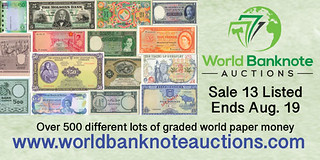 World Banknote Auctions has listed Live Sale 13 on its website, which will feature live online bidding on August 19 at 1 PM EST / 10 AM PST. This sale offers over 500 lots of graded World Paper money, with offerings ranging from Afghanistan to Zimbabwe. Bidding is now open and will continue until the sale date, when the live online auction offers live bidding on the website and through its mobile apps (available for Android and Apple).
World Banknote Auctions has listed Live Sale 13 on its website, which will feature live online bidding on August 19 at 1 PM EST / 10 AM PST. This sale offers over 500 lots of graded World Paper money, with offerings ranging from Afghanistan to Zimbabwe. Bidding is now open and will continue until the sale date, when the live online auction offers live bidding on the website and through its mobile apps (available for Android and Apple).
To read the complete lot description, see:
https://worldbanknoteauctions.com/lots/view/4-377QCY/iraq-1931-nd-1942-p-16b-pmg-choice-unc-64-14-dinar
Live Sale 13 is highlighted by one of the nicest examples of the 1931 (ND 1942) P-16b 1/4 Dinar from Iraq to come to the market in recent history. This note is graded Choice Uncirculated 64 by PMG and features the portrait of the young King Faisal II at age six. It is fully original and very rarely encountered at this grade level. Featuring the second of three signature varieties (and the one with the lowest number of graded examples according to the PMG population report) this is the first uncirculated example of this Pick number to be offered at public auction since early 2019. The market for early Iraqi banknotes has remained strong over the past couple of years and it is not often that a fresh example becomes available in the marketplace.
To read the complete lot description, see:
Ireland 10.4.1975 P-69b PMG Gem UNC 65 EPQ 100 Pounds
(https://worldbanknoteauctions.com/lots/view/4-377QDK/ireland-1041975-p-69b-pmg-gem-unc-65-epq-100-pounds)
Another strong selection comes from Ireland, highlighted by various high grade examples of the popular Lady Lavery series. Noteworthy is the fact that none of the notes are the final dates, which were hoarded when a new series of banknotes was introduced. For example, the 100 Pounds is dated 1975 and in PMG Gem Uncirculated 65 EPQ is very scarce.
To read the complete lot description, see:
https://worldbanknoteauctions.com/lots/view/4-377Q71/east-caribbean-states-antigua-nd-1988-p-20u-pmg-superb-gem-unc-67-epq-100-dollars
The sale also includes the second part of a specialized collection of East Caribbean States $100 notes. One of the highlights is a $100 printed for Anguilla and issued circa 1988 in PMG Superb Gem Uncirculated 67 EPQ This note, which even though it is considered modern has become very difficult to find in recent years and is very popular with collectors. This particular example is surpassed by just a single example in the PMG population report.
To read the complete lot description, see:
https://worldbanknoteauctions.com/lots/view/4-377QIQ/mongolia-1924-p-4r-pmg-choice-unc-63-epq-5-dollars-remainder
A final highlight worth mentioning is a PMG Choice Uncirculated 63 EPQ 5 Dollars from Mongolia from the unissued 1924 series. Perhaps the most colorful series of banknotes ever printed, this series is only encountered in remainder form as they were never issued for circulation. Offerings are infrequent at best, and this is one of the nicer examples to come to the market in recent memory.
There are many other highlights and the entire sale can be viewed on the company’s website (www.worldbanknoteauctions.com). Buyer’s Premium is just 15% and shipping is flat-rate and kept at reasonable costs ($10 within the United States and $25 anywhere else in the world).
Select highlights will be on display at the ANA’s World Fair of Money in Chicago from August 10 to 14 at table 1027. The company is also accepting consignments for future sales, with a standard 0% seller’s commission offered on all consignments. For more information, please contact info@worldbanknoteauctions.com or call 916-221-1782.
DON ALLEN BANKNOTE COLLECTION SELECTIONS
Here are some pieces that caught my eye in the Stack's Bowers sale of the Don Allen banknote collection. -Editor
Lot 30011: Australia Bank of Adelaide 1 Pound
AUSTRALIA. Bank of Adelaide. 1 Pound, 1892-1910. P-Unlisted. PMG Very Fine 25.
Printed by BWC. Dated 1893. Allegorical female at top center with floral design in background. The underprint consists of dark yellow ink while the border is made up of dark black ink. The reverse of the note displays a violet-red/brown-green design, with the bank building at center. Above the building is the bank name with the written-out denomination below, with "1" counters in each corner. Fully issued examples of this 1 Pound note are next to impossible to acquire, and it might be sometime before another example is offered to the public.
To read the complete lot description, see:
AUSTRALIA. Bank of Adelaide. 1 Pound, 1892-1910. P-Unlisted. PMG Very Fine 25.
(https://auctions.stacksbowers.com/lots/view/3-S3F62/australia-bank-of-adelaide-1-pound-1892-1910-p-unlisted-pmg-very-fine-25)
Lot 30050: 1927 Bermuda 1 Pound
BERMUDA. Bermuda Government. 1 Pound, 1927. P-5b. PMG Choice About Uncirculated 58 EPQ.
Printed by W&S. Watermark of bank title. Fractional serial number prefix. An extremely scarce variety with only three certified by PMG. Terrific bay view at central vignette with arms left, KGV cameo right. This piece is clearly missing in even some of the most put together collections, and it is likely an upgrade to any that one currently may own. PMG Pop 1/1 Finer.
To read the complete lot description, see:
BERMUDA. Bermuda Government. 1 Pound, 1927. P-5b. PMG Choice About Uncirculated 58 EPQ.
(https://auctions.stacksbowers.com/lots/view/3-S3FDV/bermuda-bermuda-government-1-pound-1927-p-5b-pmg-choice-about-uncirculated-58-epq)
Lot 30176: FRENCH AFARS and ISSAS Tresor Public. 500 Francs
FRENCH AFARS & ISSAS. Lot of (2). Tresor Public. 500 Francs, ND (1952-73). P-27 & 31. PMG Choice Uncirculated 63 EPQ & 64.
Included in this lot are P-27 ND (1952) 500 Francs in a CU 63Q grade and P-31 ND (1973) 500 Francs in a CU 64 grade.
To read the complete lot description, see:
(https://auctions.stacksbowers.com/lots/view/3-S3G72/french-afars-issas-lot-of-2-tresor-public-500-francs-nd-1952-73-p-27-31-pmg-choice-uncirculated-63-epq-64)
Lot 30458: 1954 Seychelles 5 Rupees
SEYCHELLES. Government of Seychelles. 5 Rupees, 1954. P-11a. PMG Choice Uncirculated 64.
Printed by TDLR. Light purple ink contrasts well with mostly bright paper on this 5 Rupees note. Queen Elizabeth II is depicted at right surrounded by an ornate design.
To read the complete lot description, see:
SEYCHELLES. Government of Seychelles. 5 Rupees, 1954. P-11a. PMG Choice Uncirculated 64.
(https://auctions.stacksbowers.com/lots/view/3-S3HUJ/seychelles-government-of-seychelles-5-rupees-1954-p-11a-pmg-choice-uncirculated-64)
Lot 30464: National Bank of South Africa Limited. 1 Pound
SOUTH AFRICA. National Bank of South Africa Limited. 1 Pound, 1900-20. P-S492. PMG Choice Fine 15.
Late April 1st, 1919 date. Bloemfontein. Printed by W&S. A scarce "Orange Free State Issue," found here in a Choice Fine grade.
To read the complete lot description, see:
SOUTH AFRICA. National Bank of South Africa Limited. 1 Pound, 1900-20. P-S492. PMG Choice Fine
(https://auctions.stacksbowers.com/lots/view/3-S3HVP/south-africa-national-bank-of-south-africa-limited-1-pound-1900-20-p-s492-pmg-choice-fine-15)
NUMISMATIC NUGGETS: AUGUST 1, 2021
Here's a selection of interesting or unusual items I came across in the marketplace this week. Tell us what you think of some of these. -Editor
One piece 1796 Middlesex Farthing Conder Token MS-64 PCGS (BN) Conder Tokens were struck to fill the void from a lack of circulating small change in Great Britain following the completion of the American revolution. This specific example has original surfaces and has been graded by PCGS as MS-64 (Brown).
So who were the Three Thomas's ? -Editor
To read the complete lot description, see:
1796 Middlesex Farthing Conder Token MS-64 PCGS (BN)
(https://www.liveauctioneers.com/item/108939918_1796-middlesex-farthing-conder-token-ms-64-pcgs-bn)
Is anyone familiar with this medal? What do you think of this lot? From Homestead Auctions in Norton, OH. -Editor
To read the complete lot description, see:
Lot 32: 8 x 10 Frame British Gorget and Beaded Necklace , One 2" Dia 1870 Medal and Six Bone Beads
(https://www.invaluable.com/auction-lot/8-x-10-Frame-British-Gorget-and-Beaded-Necklace-,-32-c-3444E46B2E)
A Heritage offering. Nice example of a classic coin. -Editor
To read the complete lot description, see:
1913 1C PR66 Red PCGS. PCGS Population: (41/6 and 5/1+). NGC Census: (7/4 and 1/0+). CDN: $2,000 Whsle. Bid for NGC/P
(https://coins.ha.com/itm/proof-lincoln-cents/1913-1c-pr66-red-pcgs-pcgs-population-41-6-and-5-1-ngc-census-7-4-and-1-0-cdn-2-000-whsle-bid-for-ngc-p/a/60217-93507.s)
1933 Post Office Gold Broadside
1933 Post Office Broadside Notifying the Public of the Requirement to Turn In All Gold Coins and Bullion to Their Banks. Very Fine.
1933 Post Office Paper Poster Notifying the Public of the Requirement to Turn In All Gold Coins and Bullion to their Banks. Overall dimensions 17.5 x 22.5 inches. Document displays at 10 x 15 inches. Very Fine. Remarkable document instructing citizens that President Franklin D. Roosevelt had mandated that all gold coins, not of numismatic significance, be redeemed for silver-based currency within four weeks. After that period violators still possessing gold coins or bullion could be jailed for up to 10 years and/or fined up to $10,000.
The most relevant parts of the text include: UNDER EXECUTIVE ORDER / OF THE PRESIDENT / ISSUED APRIL 5, 1933 / ALL PERSONS ARE REQUIRED TO DELIVER / ON OR BEFORE MAY 1, 1933 / ALL GOLD COIN, GOLD BULLION, AND / GOLD CERTIFICATES NOW OWNED BY THEM TO / ANY MEMBER BANK OF THE FEDERAL RESERVE SYSTEM. Further: CRIMINAL PENALTIES OF EXECUTIVE ORDER / $10,00 FINE OR 10 YEARS IMPRISONMENT, OR BOTH, AS / PROVIDED IN SECTION 9 OF THE ORDER. The poster was ordered by James A Farley, Postmaster General, and facsimile signed by William H. Woodin, Secretary of the Treasury, and was intended to be displayed in all United States Post Offices.
Three old vertical and two horizontal folds are noted. A tiny area at the lower right is affected by pressure damage and a 1/16 inch area of paper loss, but this is barely noticeable, and does not significantly affect the appearance of the document. Impressive and almost unbelievable in today's political climate.
This item in the August 2021 Stack's Bowers sale is a great piece of numismatic ephemera, and a super display piece for a numismatic office or library. -Editor
To read the complete lot description, see:
1933 Post Office Broadside Notifying the Public of the Requirement to Turn In All Gold Coins and Bullion to Their Banks. Very Fine.
(https://auctions.stacksbowers.com/lots/view/3-S5CST/1933-post-office-broadside-notifying-the-public-of-the-requirement-to-turn-in-all-gold-coins-and-bullion-to-their-banks-very-fine)
VIETNAM. Gold Wafer Money, ND (ca. 1960s). UNCIRCULATED.
Kim Thanh issue. Weight: 14.5 gms. A mostly legible gold sheet, slightly wrinkled. Sold with original paper envelope.
These gold sheets were used as evacuation money by Vietnamese refugees fleeing the country during wartime in the 1960's.
From the Stack's Bowers August 2021 World Coins sale. Interesting item - I wasn't aware of these. -Editor
To read the complete lot description, see:
VIETNAM. Gold Wafer Money, ND (ca. 1960s). UNCIRCULATED.
(https://auctions.stacksbowers.com/lots/view/3-S7V87/vietnam-gold-wafer-money-nd-ca-1960s-uncirculated)
GOLD PENNY OF ECGBERHT OFFERED
Dix, Noonan Webb are offering a rare gold penny of Ecgberht. Here's an excerpt from the press release. -Editor
A highly important gold Penny of Ecgberht, King of the West Saxons (802-839) is expected to fetch £150,000-200,000 when it is offered in a sale of Coins and Historical Medals on Tuesday, September 7 & Wednesday, September 8, 2021 at international coins, medals, banknotes and jewellery specialists Dix Noonan Webb. This is the only late Anglo-Saxon gold coin in private hands; the other eight specimens are in institutions (the British Museum having seven and another being in Lausanne).
The Gold Penny, or Mancus of 30 Pence, was discovered by a metal detectorist at West Dean, on the Wiltshire/Hampshire border, in March 2020, and is unique. It was struck at a West Saxon mint, possibly Southampton or Winchester, and bears the King’s title, ECGBEORHT REX, around a monogram of the word SAXON.
As Peter Preston-Morley, Head of Coin Department at Dix Noonan Webb, commented: Full XRF and SEM analysis of this coin was performed in June 2021. The results show the use of high-purity gold, with only 2.8% silver and 0.6% copper at detectable levels. This composition is consistent with that of natural gold which has been neither refined nor artificially alloyed. Perhaps of more significance, the composition of the Ecgberht mancus falls within the same range as other medieval coins reported by Dr Gareth Williams and Dr Michael Cowell in 2009 (’Analysis of a gold mancus of Coenwulf of Mercia and other comparable coins’, in The British Museum Technical Research Bulletin 3: 31-6). Gold of such purity is particularly malleable and easy to strike but also more prone to wear and damage. None of the surface marks seem consistent with damage or alteration caused by attempts at mounting the coin for its use as a brooch or pendant.
Only eight other known gold coins were struck in England between c. 630 and 1257, and as the late Mark Blackburn (Keeper of Coins and Medals at Fitzwilliam Museum, Cambridge) observed, the role of gold in England during the Viking age is a tantalising subject. These gold coins were, in all probability, produced for ceremonial or other high-status payments. It is believed that only on special occasions, perhaps for prestige or, as was the case in the time of Offa, religious events, were orders given for mancuses to be struck.
Two other silver pennies of this type, by the moneyer Bosa, were noted by Dr Rory Naismith in his standard work, published in 2010. One is in the British Museum; the other, on a larger flan, was listed for sale by Patrick Finn in 1999. A third penny, found at Fulbourn (Cambridgeshire) in 2011, is recorded and a fourth, found near Wimborne (Dorset) in February 2014, was offered in the Timeline auction, 3 December 2014. All coins are from different dies to the specimen in the auction in September.
As Dr Naismith states (The Coinage of Southern England 796-865, pp.43-4), the location of one or more West Saxon mints, which appear to have maintained a low level of production from the late 8th century until the 860s, remains a matter of debate among scholars. Southampton, pre-eminent in the 8th century, had fallen into decline by Ecgberht’s time, while Winchester had primarily been of ecclesiastical importance and was not developed as an urban centre until much later in the 9th century. This new coin is much neater than any of the silver coins.
Ecgberht died in 839, and in his will left land only to male members of his family, so that the estates should not be lost to the royal house through marriage. His wealth was no doubt one reason for his ability to purchase the support of the south-eastern church establishment. He was buried in Winchester, as were his son, Æthelwulf, his grandson, Alfred the Great, and his great-grandson, Edward the Elder.
Mr Preston-Morley finishes by saying: This coin probably represents a mancus: a gold denomination that first appeared in central and northern Italy, but was current in England already before the year 800. Mancuses would have been extremely valuable coins. Each had the buying power of 30 contemporary silver coins, and this at a time when a single Carolingian denarius would buy a dozen two-pound loaves of wheat bread: a single gold mancus would therefore have bought the equivalent of 360 loaves. Such high-value coins would not have been made in the normal course of minting. They probably stemmed from an act of royal or high-status largesse; one tenth-century English king's will specifically asked that 2,000 mancuses of gold (which could also be used to measure gold by weight) be taken and minted into mancuses. Unfortunately the volume of charters and other records from Ecgberht's reign is very small, so no obvious occasion for the minting of this coin can be identified; nor is it possible to date the coin to a more specific period within Ecgberht's reign. Its lettering and monogram are executed more neatly than on the dies of contemporary pennies.
For more information, see:
https://www.dnw.co.uk/
David Pickup passed along this Daily Mail article with additional text and images. Thanks. -Editor
To read the complete article, see:
Treasure hunter finds PENNY worth £200,000: Metal detectorist is set for windfall after unearthing Anglo-Saxon gold coin dating back 1,200 years to the time of Wessex King Ecgberht
(https://www.dailymail.co.uk/news/article-9840003/Metal-detectorist-finds-200-000-gold-coin-Wiltshire-field.html)
GOLD COIN FOUND AT ATOCHA SHIPWRECK SITE
In the news last week was the recent recovery of another gold coin from the wreck of the Atocha. -Editor
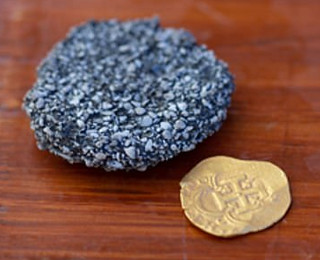 A local treasure hunter working on the Nuestra de Atocha Spanish galleon shipwreck in the Florida Keys has found an exceedingly rare Atocha gold coin.
A local treasure hunter working on the Nuestra de Atocha Spanish galleon shipwreck in the Florida Keys has found an exceedingly rare Atocha gold coin.
Engineer and diver Zach Moore, who is originally from Vero Beach, found the gold coin on July 16 in about 30 feet of water. The last Atocha gold coin was recovered from the site in 2001.
The coin is valued at approximately $98,000 and is the 121st Atocha gold coin found at the site of the shipwreck.
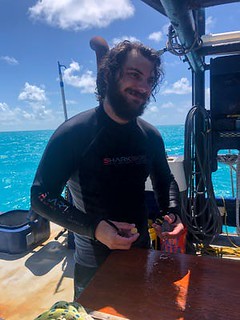 Moore is a member of the crew from Mel Fisher’s Treasures salvage vessel J.B. Magruder, captained by Tim Meade. The crew of the J.B Magruder has been working the site of the shipwreck in the Florida Keys.
Moore is a member of the crew from Mel Fisher’s Treasures salvage vessel J.B. Magruder, captained by Tim Meade. The crew of the J.B Magruder has been working the site of the shipwreck in the Florida Keys.
At the time of the sinking in 1622, the ship was heavily laden with gold, silver, gems and other valuables bound from the New World for Spain. The cargo’s value was estimated to be $400 million.
Zach Moore is a second-generation treasure hunter, who also spent time working the 1715 fleet site just off the Vero Beach coast. He couldn't be reached for comment Thursday.
Along with his dad Bill Moore, Zach discovered a rare silver pendant and rosary, with a still intact statue of Jesus Christ at the site of the 1715 shipwreck.
Bill Moore was part of the crew that discovered and recovered the original find from the Nuestra de Atocha in 1985.
To read the complete articles, see:
Vero Beach treasure hunter finds rare gold coin in Keys from 1622 Spanish galleon shipwreck
(https://www.tcpalm.com/story/news/local/indian-river-county/2021/07/22/vero-beach-treasure-hunter-mel-fishers-treasures-finds-rare-gold-coin-in-keys-from-1622-shipwreck/8058361002/)
Treasure hunter diving on the Nuestra de Atocha shipwreck site in Florida finds a gold coin worth $98K
(https://www.dailymail.co.uk/sciencetech/article-9818373/Treasure-hunter-finds-gold-coin-worth-98-000-worlds-valuable-shipwreck.html)
SPOTTING SHIPWRECKS WITH COMPUTERS
This article discusses some new technology for locating shipwrecks. Could it lead to the discovery of more sunken coin hoards? -Editor
Of these four ocean floor scans, the top two panels clearly show shipwrecks, but the shipwrecks in the bottom two panels, marked by red arrows, could easily be mistaken for natural features.
In collaboration with the United States Navy’s Underwater Archaeology Branch, I taught a computer how to recognize shipwrecks on the ocean floor from scans taken by aircraft and ships on the surface. The computer model we created is 92% accurate in finding known shipwrecks. The project focused on the coasts of the mainland U.S. and Puerto Rico. It is now ready to be used to find unknown or unmapped shipwrecks.
The first step in creating the shipwreck model was to teach the computer what a shipwreck looks like. It was also important to teach the computer how to tell the difference between wrecks and the topography of the seafloor. To do this, I needed lots of examples of shipwrecks. I also needed to teach the model what the natural ocean floor looks like.
Conveniently, the National Oceanic and Atmospheric Administration keeps a public database of shipwrecks. It also has a large public database of different types of imagery collected from around the world, including sonar and lidar imagery of the seafloor. The imagery I used extends to a little over 14 miles (23 kilometers) from the coast and to a depth of 279 feet (85 meters). This imagery contains huge areas with no shipwrecks, as well as the occasional shipwreck.
Finding shipwrecks is important for understanding the human past – think trade, migration, war – but underwater archaeology is expensive and dangerous. A model that automatically maps all shipwrecks over a large area can reduce the time and cost needed to look for wrecks, either with underwater drones or human divers.
The Navy’s Underwater Archaeology Branch is interested in this work because it could help the unit find unmapped or unknown naval shipwrecks. More broadly, this is a new method in the field of underwater archaeology that can be expanded to look for various types of submerged archaeological features, including buildings, statues and airplanes.
This project is the first archaeology-focused model that was built to automatically identify shipwrecks over a large area, in this case the entire coast of the mainland U.S. There are a few related projects that are focused on finding shipwrecks using deep learning and imagery collected by an underwater drone. These projects are able to find a handful of shipwrecks that are in the area immediately surrounding the drone.
To read the complete article, see:
AI spots shipwrecks from the ocean surface – and even from the air
(https://theconversation.com/ai-spots-shipwrecks-from-the-ocean-surface-and-even-from-the-air-163794)
I reached out to our resident shipwreck expert, Bob Evans, the Chief Scientist for S.S. Central America recovery operations. -Editor
Bob writes:
"This study and the technique is fascinating. But it is restricted to 14 km from the coasts and 85m depth. This corresponds roughly to within "easy" saturation diving access. (Nothing is ever easy. Sat divers are a little weird, but good on 'em! I worked with them on the Brother Jonathan in 2000, so I feel entitled to an opinion.) The SSCA site is well beyond the scope of this study and technique, since it lies roughly 280 km offshore (Cape Fear, NC is the closest point of land) and 2200m down. 150 nautical miles and 7200 feet for those of you keeping the English score, which the English don't anymore. But I digress.
For me, the inferential subtext is just how much computer processing technology, ultimately leading to AI, has progressed since those heady days in 1988 when we located and confirmed the SSCA site using a bank of IBM ATs or clones, and C++ as programming. I think that's what we used then. It wasn't "my department." I was just typing.
The sonar anomaly of the SSCA site was originally logged, in June 1986, as showing a large geological feature, with human sonar experts making that analysis. We spent 1987 fending off maritime and legal challenges while trying to work on the wrong sites, including one with a lot of coal. Based on the knowledge gained from "ground truthing" those sonar anomalies, my review of the full sonar survey record compelled another look at the "large geological feature," first dive in 1988, and the rest is history.
To be sure, there are unknown deposits and features in the deep ocean, 1000-plus meters down, that will still confound and present confusing signals to remote sensing devices and AI, but technology marches on. It will be interesting to see what turns up from this study and its derivatives."
I'm looking forward to seeing Bob and all of my old and new numismatic friends at the upcoming ANA show in Rosemont. Bob will be ringing the S.S. Central America ship's bell (part of the site confirmation process in 1988) at scheduled times throughout the show. The sound of history! -Editor
THE TUSSLE OVER TESLA
Arthur Shippee and Howard Berlin forwarded this BBC News article about the kerfuffle over planned coins honoring inventor Nikola Tesla. Thanks. -Editor
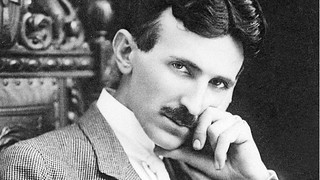 Nikola Tesla, pioneer of alternating current electricity, might have been shocked to know how his legacy would cause a row between European states.
Nikola Tesla, pioneer of alternating current electricity, might have been shocked to know how his legacy would cause a row between European states.
Serbia's central bank has threatened to take action with the EU if its neighbour Croatia puts the late great inventor on its coins.
Croatia wants his face on its euros when it joins the currency in 2023.
But Serbia claims him for its own because he saw himself as a Serb though born in what is now Croatia.
The two countries are old rivals with a tragic history.
Croatia's national bank said it would put the inventor on its future 50, 20 and 10-cent coins, after consulting the public. It will put its plan to the EU in October.
Serbia's central bank hit back by saying that to put Tesla on Croatian coins would mean "usurping" Serbian heritage.
But Croatia is not backing down. Deputy Prime Minister Boris Milosevic - who like Tesla is an ethnic Serb - said he was "proud and happy" with the plan.
He was behind major modern inventions including the remote control and fluorescent lighting.
Can't we all just get along? Tesla lived most of his life in the U.S., and to my mind his greatest achievement was his work with George Westinghouse perfecting the system of generating and transferring alternating current which drives the world's power grids (not to mention his designs for the electric motor). These two innovations together created the modern world. Let's honor him everywhere! -Editor
To read the complete article, see:
Nikola Tesla: Sparks fly over plans to honour inventor with coin
(https://www.bbc.com/news/world-europe-57969489)
SACRAMENTO MUSEUM GOLD ARTIFACTS STOLEN
This article from today's Sacramento Record discusses a theft of gold artifacts from the Sacramento History Museum. -Editor
The Sacramento History Museum said a thief broke in and stole some of its gold artifacts on Saturday.
Surveillance cameras showed someone broke into the main entrance of the museum around 5 a.m. and went straight for the gold artifacts in a display case, said Traci Rockefeller Cusack, a spokeswoman for the museum.
Police said officers responded to a ringing alarm and the suspect had fled before officers arrived.
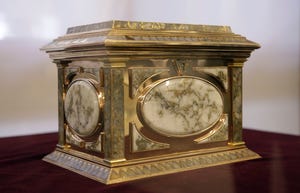 In 2013, a parolee was sentenced to four years in federal prison for stealing and then selling a Gold Rush-era jewelry box from the Oakland Museum of California in 2012. The box, worth about $800,000, was created between 1869 and 1878 by San Francisco goldsmith A. Andrews and made of California gold and adorned with gold-veined quartz. The man — who was also was a suspect in a break-in at the museum on Nov. 9, 2012, in which gold nuggets and Gold Rush-era pistols were taken — , pleaded guilty.
In 2013, a parolee was sentenced to four years in federal prison for stealing and then selling a Gold Rush-era jewelry box from the Oakland Museum of California in 2012. The box, worth about $800,000, was created between 1869 and 1878 by San Francisco goldsmith A. Andrews and made of California gold and adorned with gold-veined quartz. The man — who was also was a suspect in a break-in at the museum on Nov. 9, 2012, in which gold nuggets and Gold Rush-era pistols were taken — , pleaded guilty.
Rare coin dealer Don Kagin told The Associated Press in 2015 that robbers in these types of thefts may have difficulty selling gold or nuggets unless they melt them down. Word of the heists spreads quickly the rare coin and memorabilia community, Kagin said, and dealers will be on the lookout for items with historical significance that suddenly appear on the market.
To read the complete article, see:
Thief breaks into Sacramento museum, steals gold artifacts
(https://www.recordnet.com/story/news/crime/2021/07/31/stolen-history-thief-makes-off-with-gold-artifacts-sacramento-museum/5445063001/)

